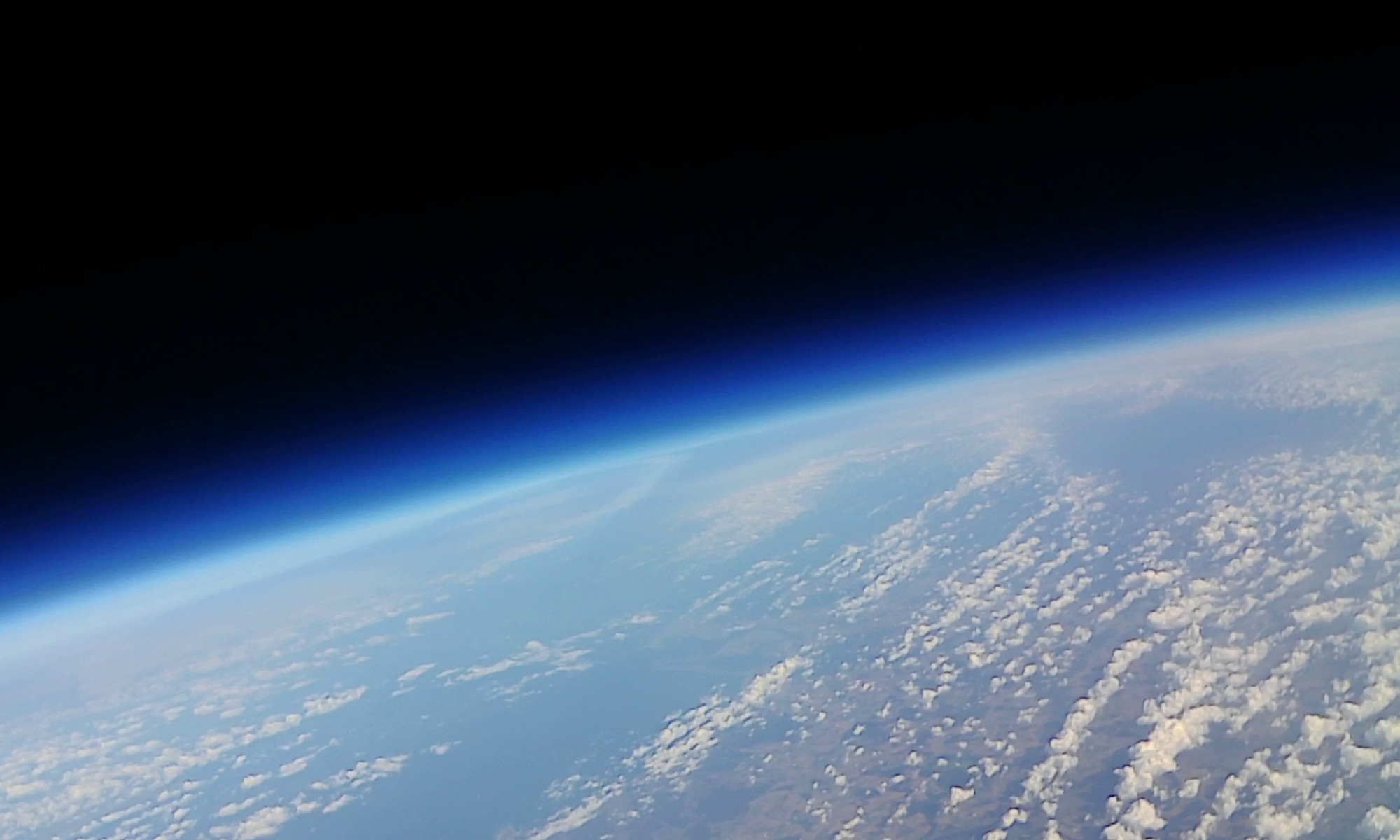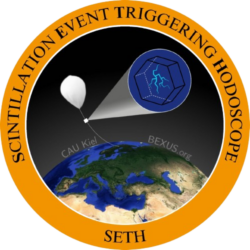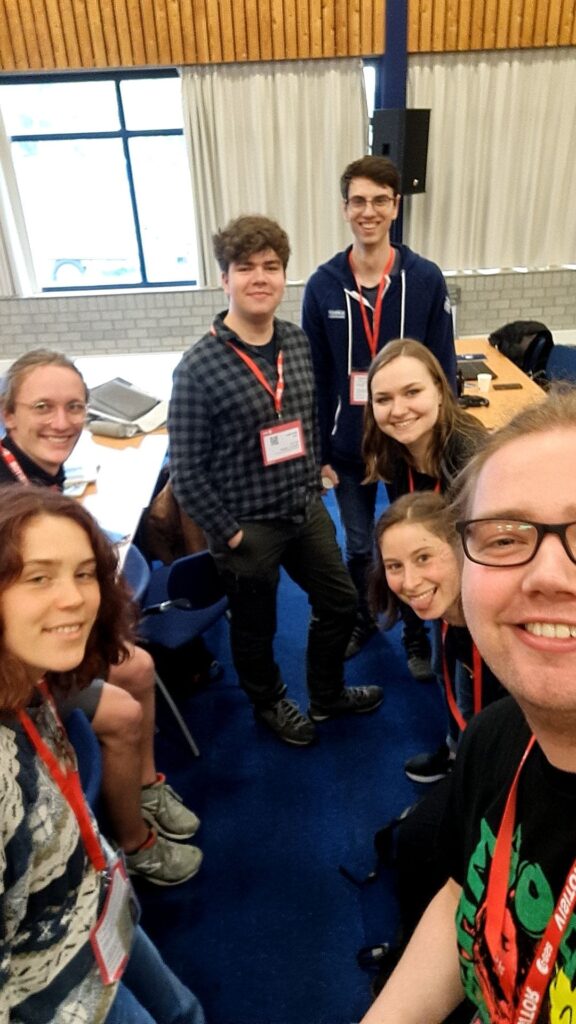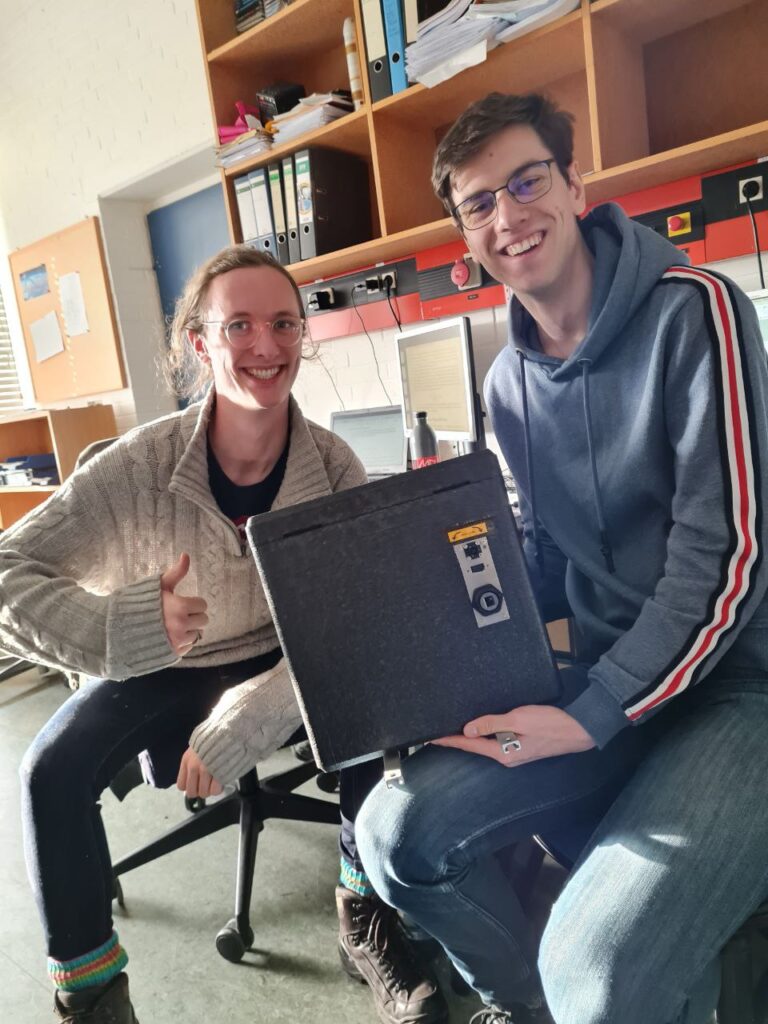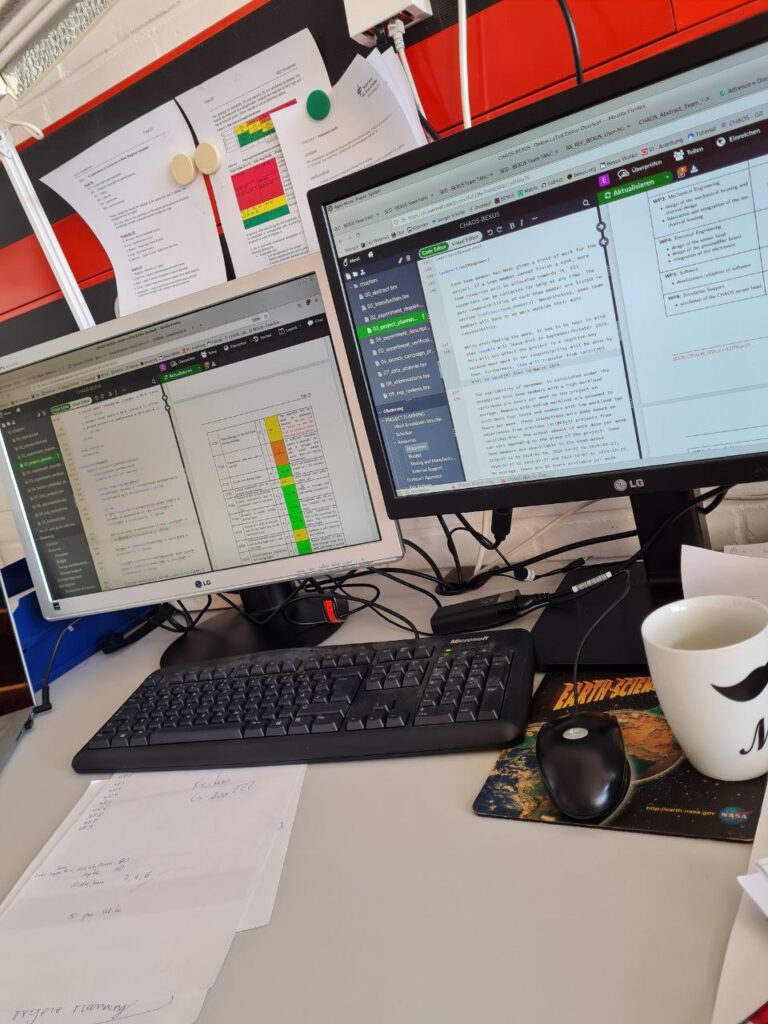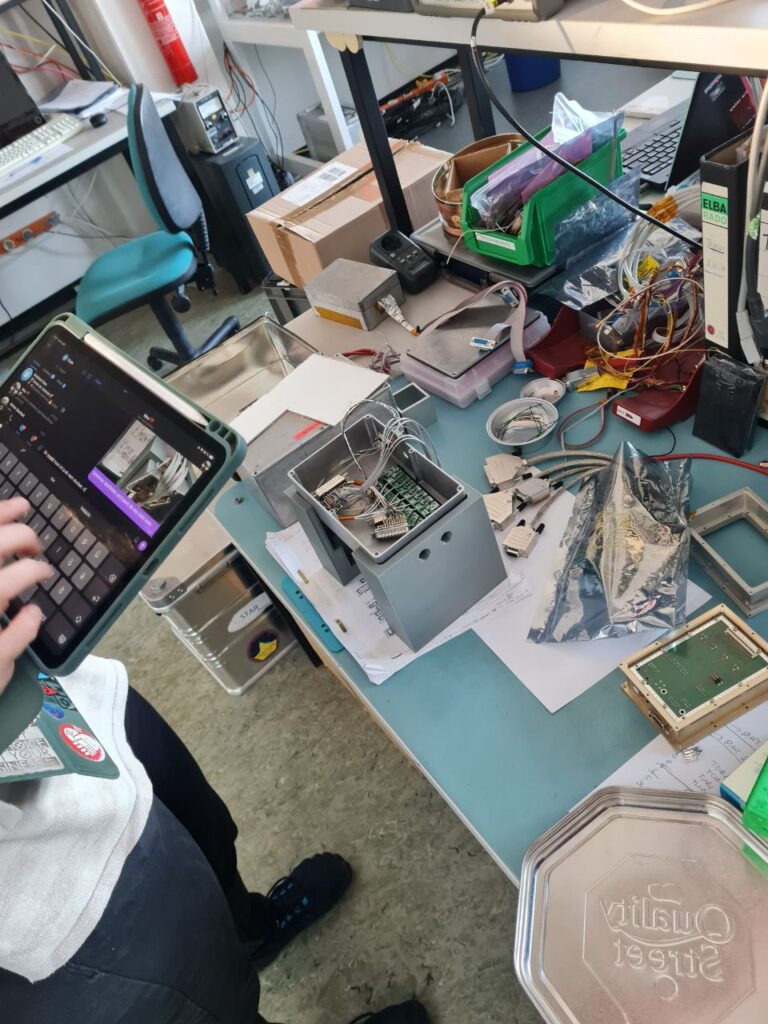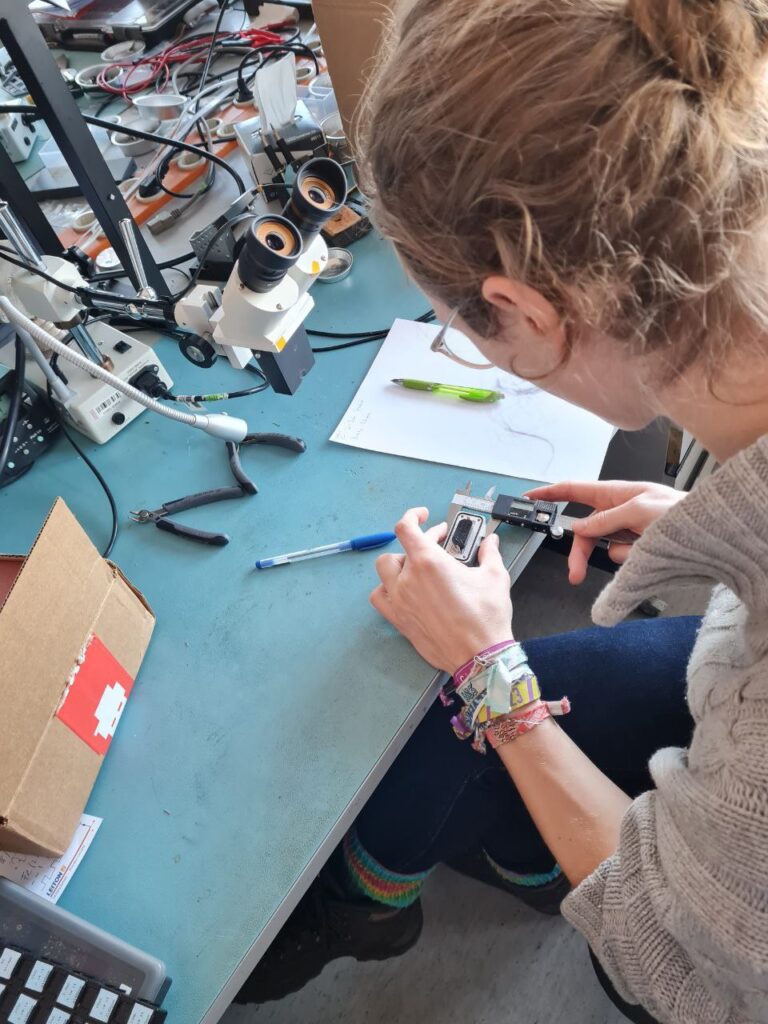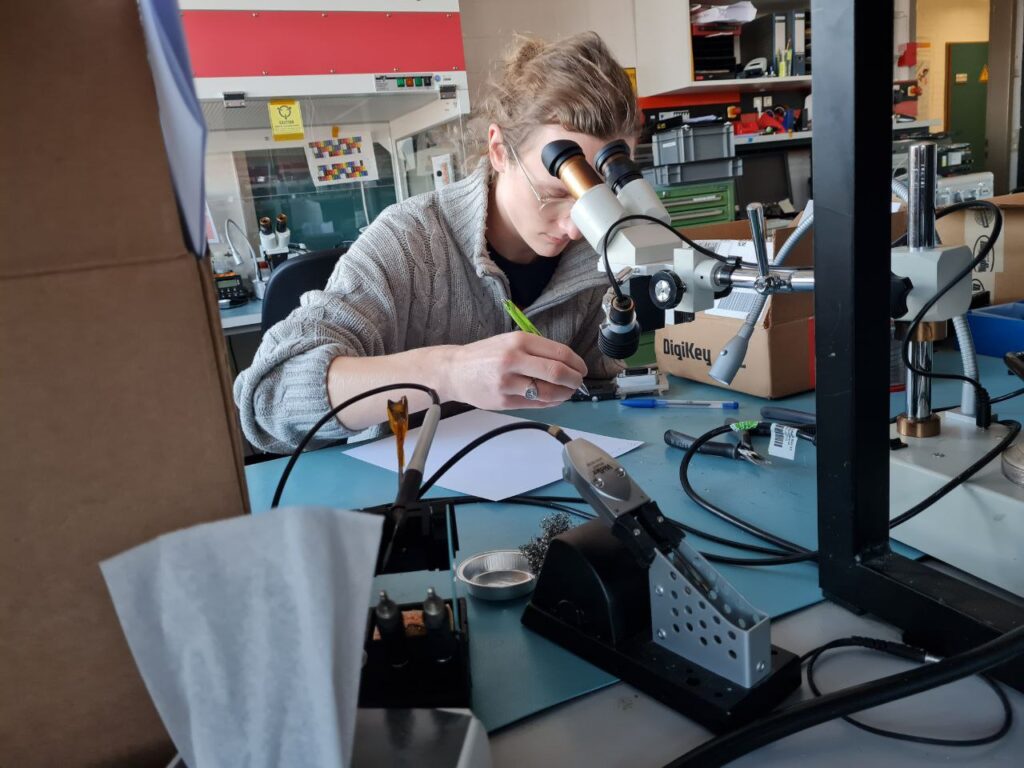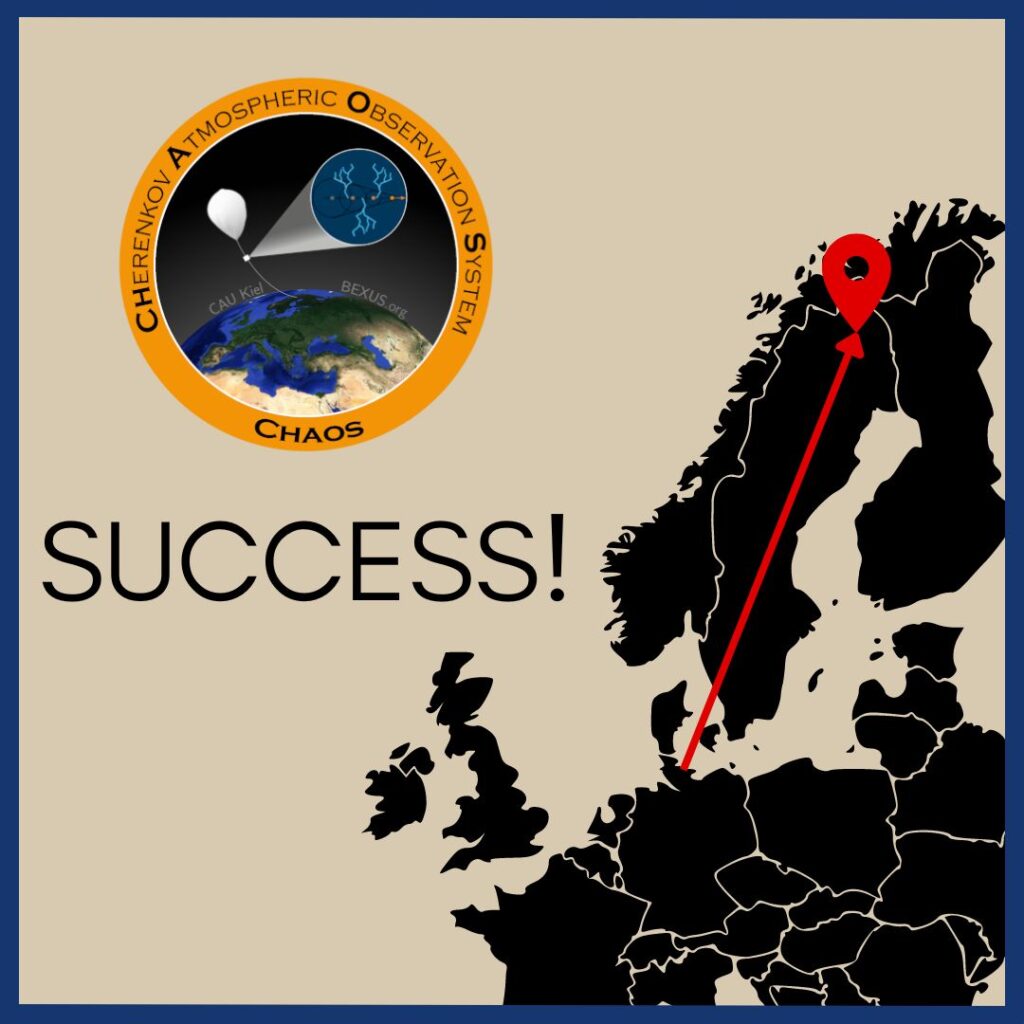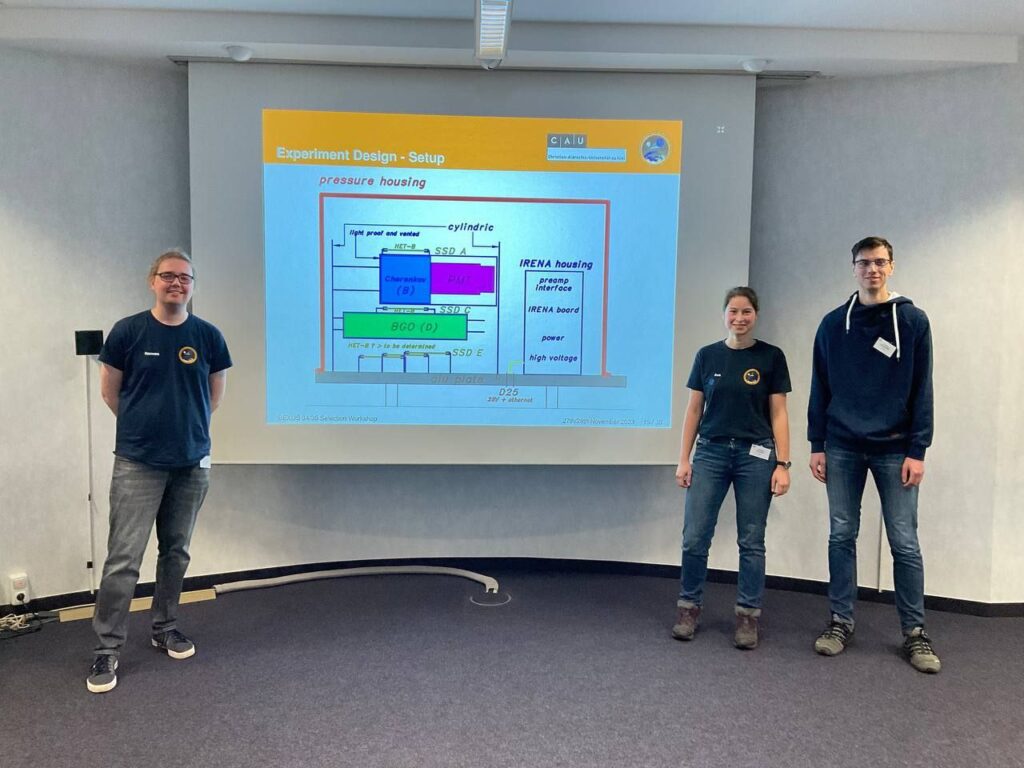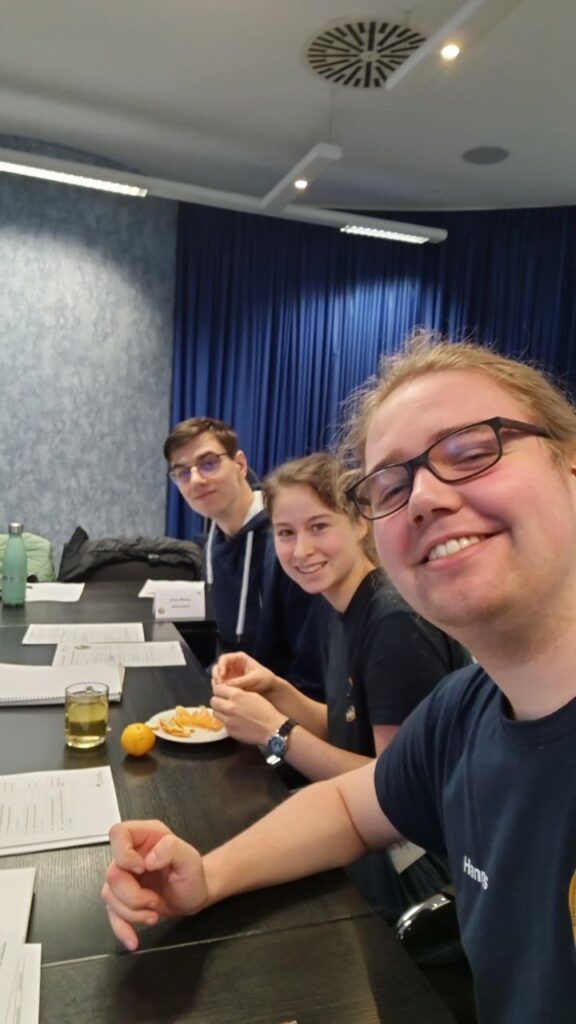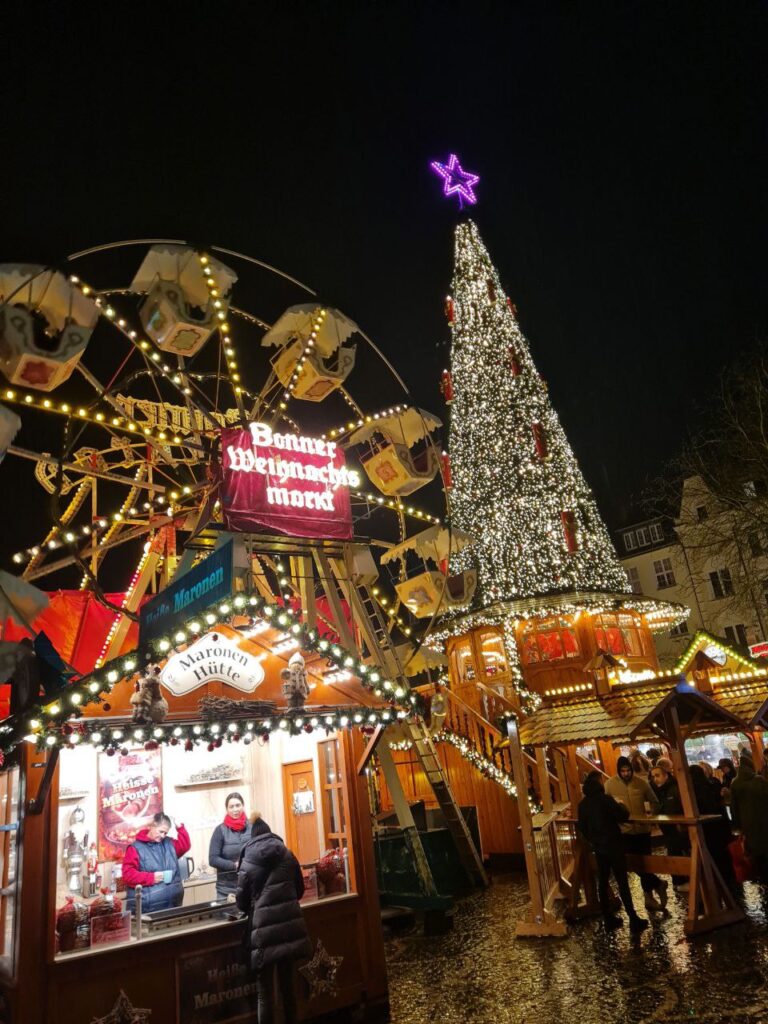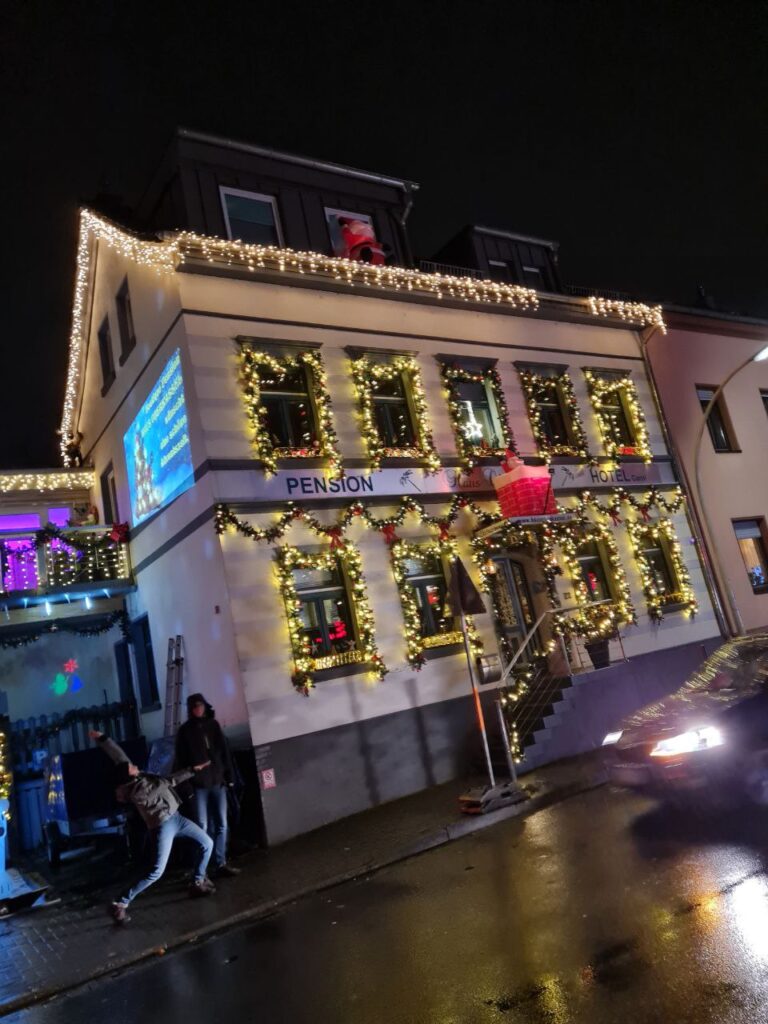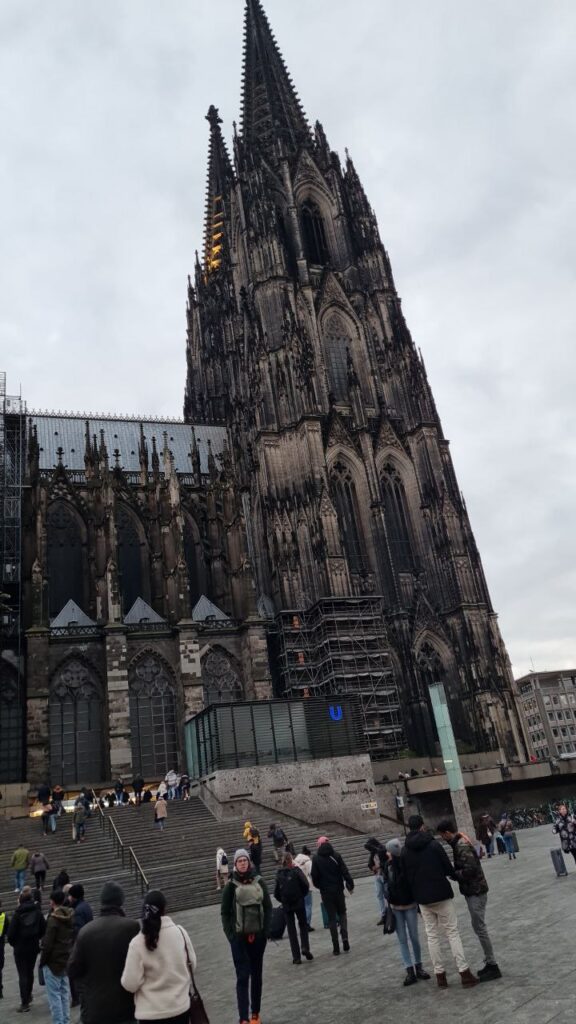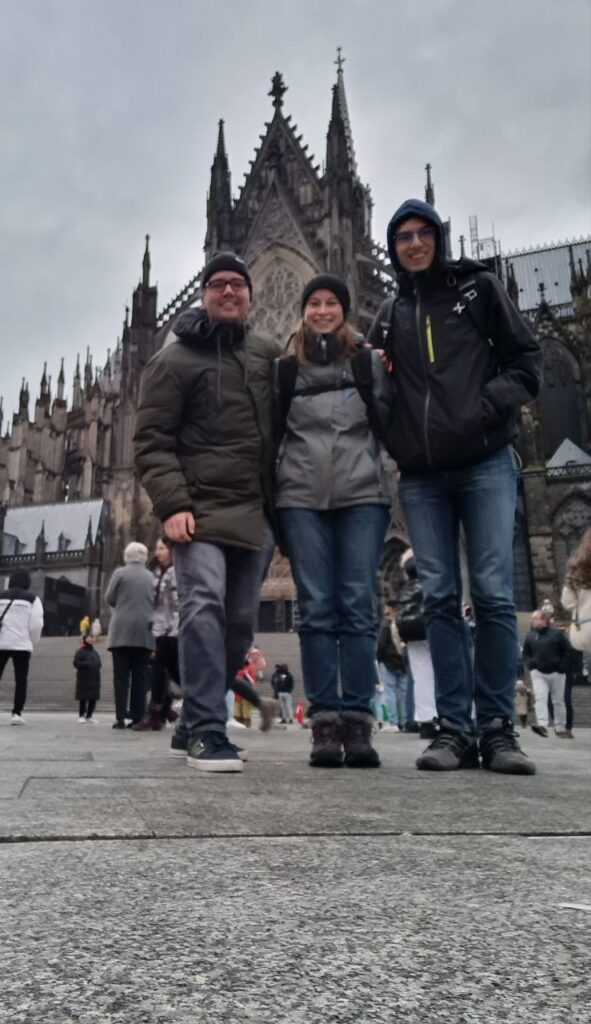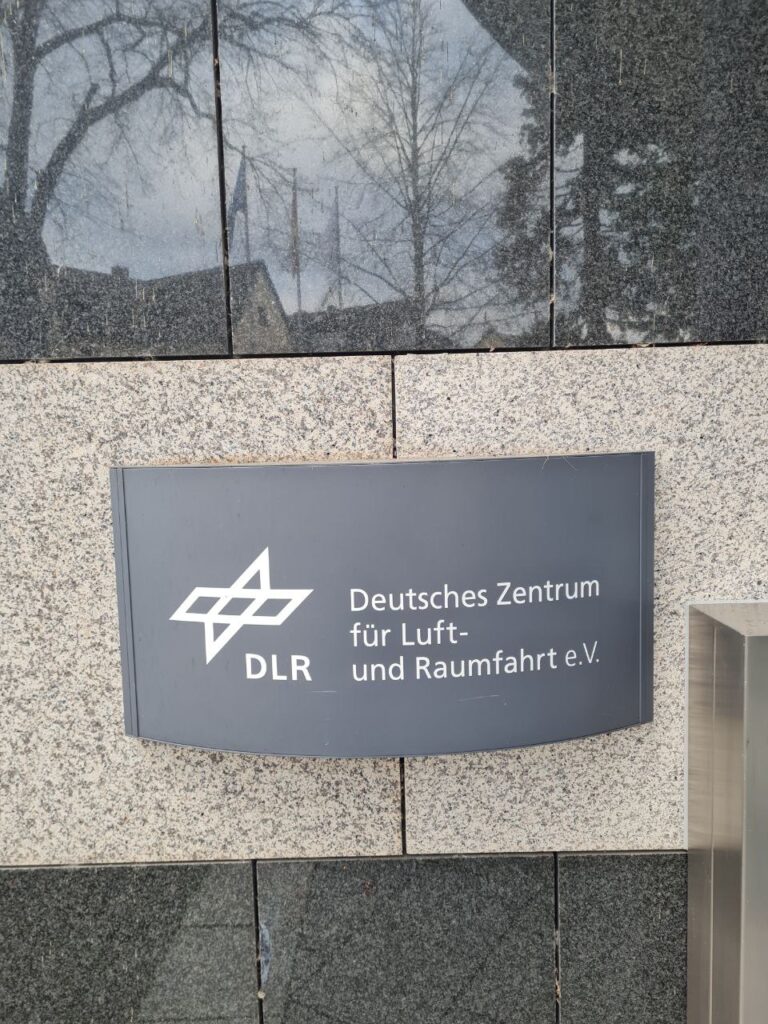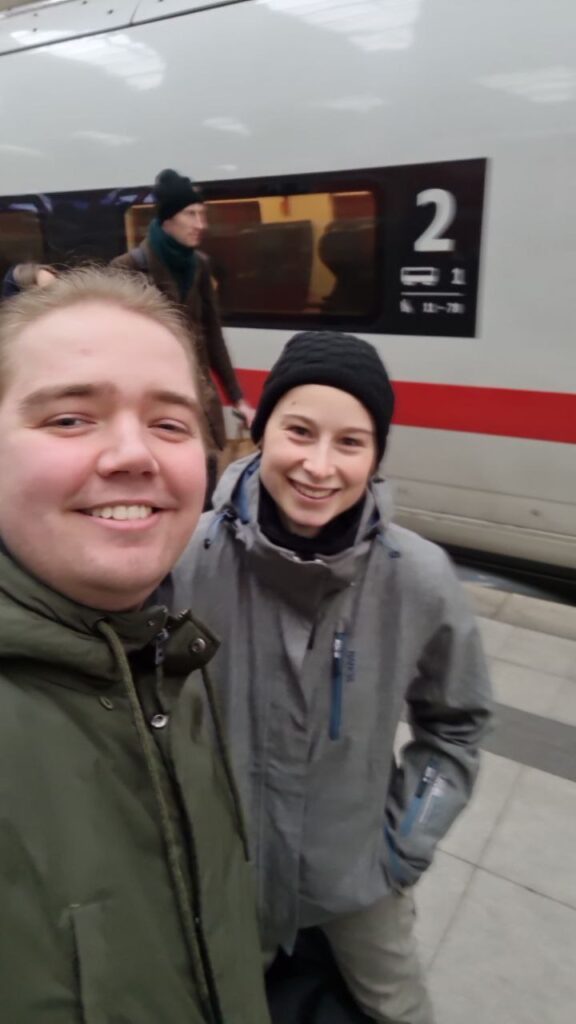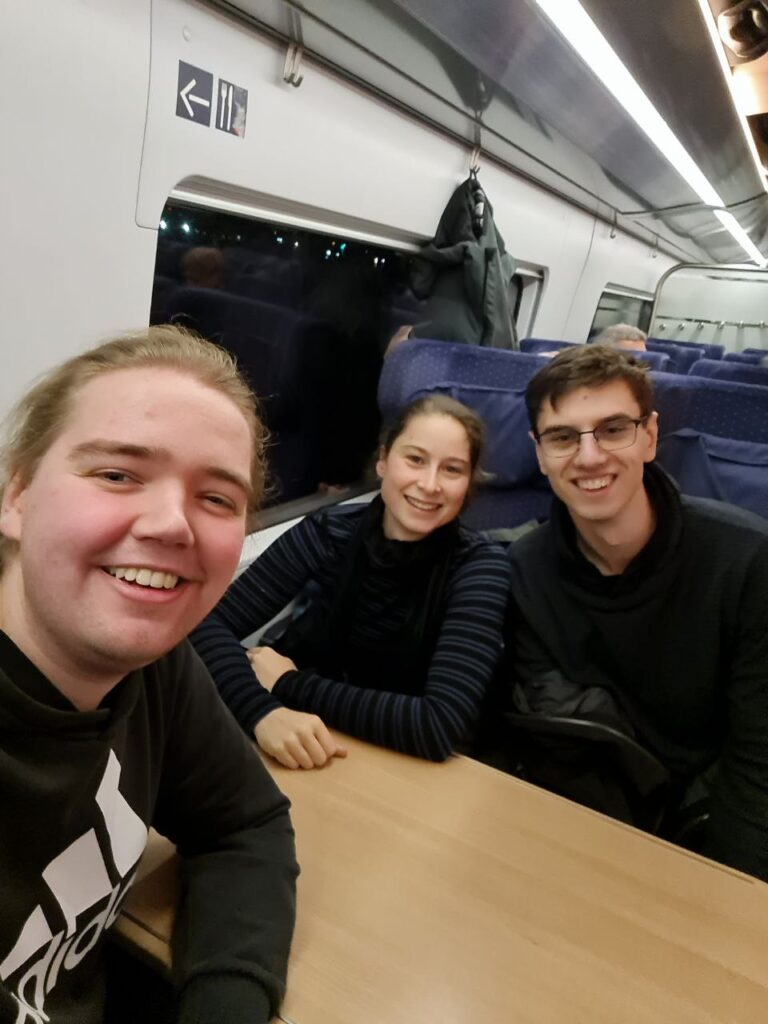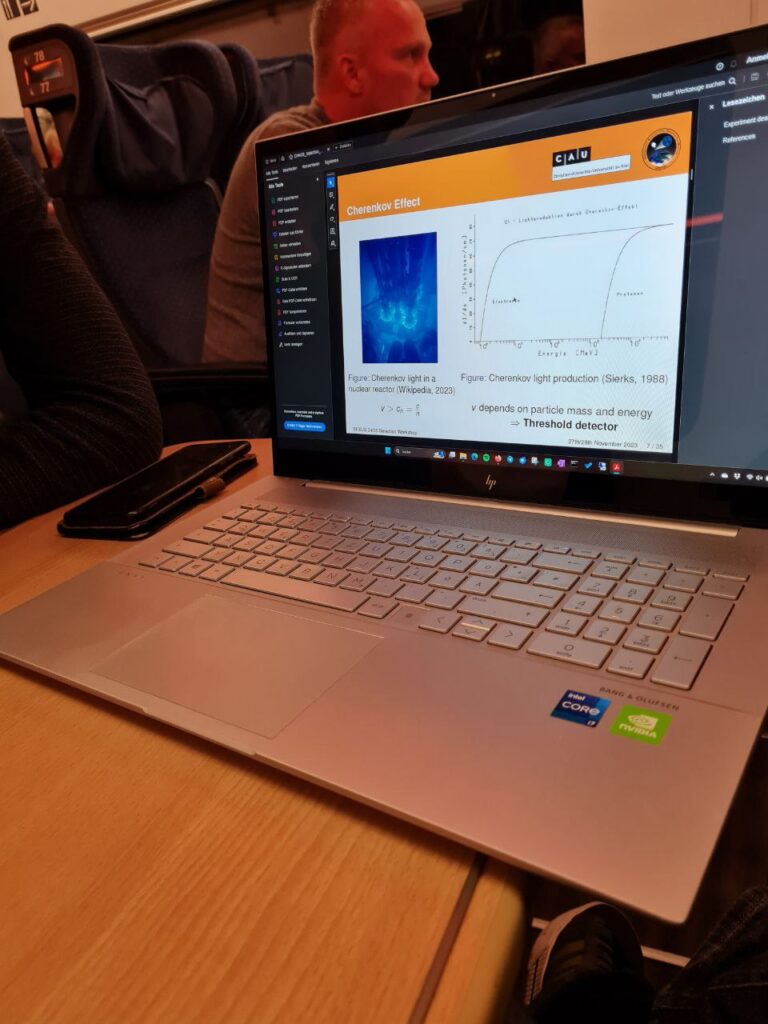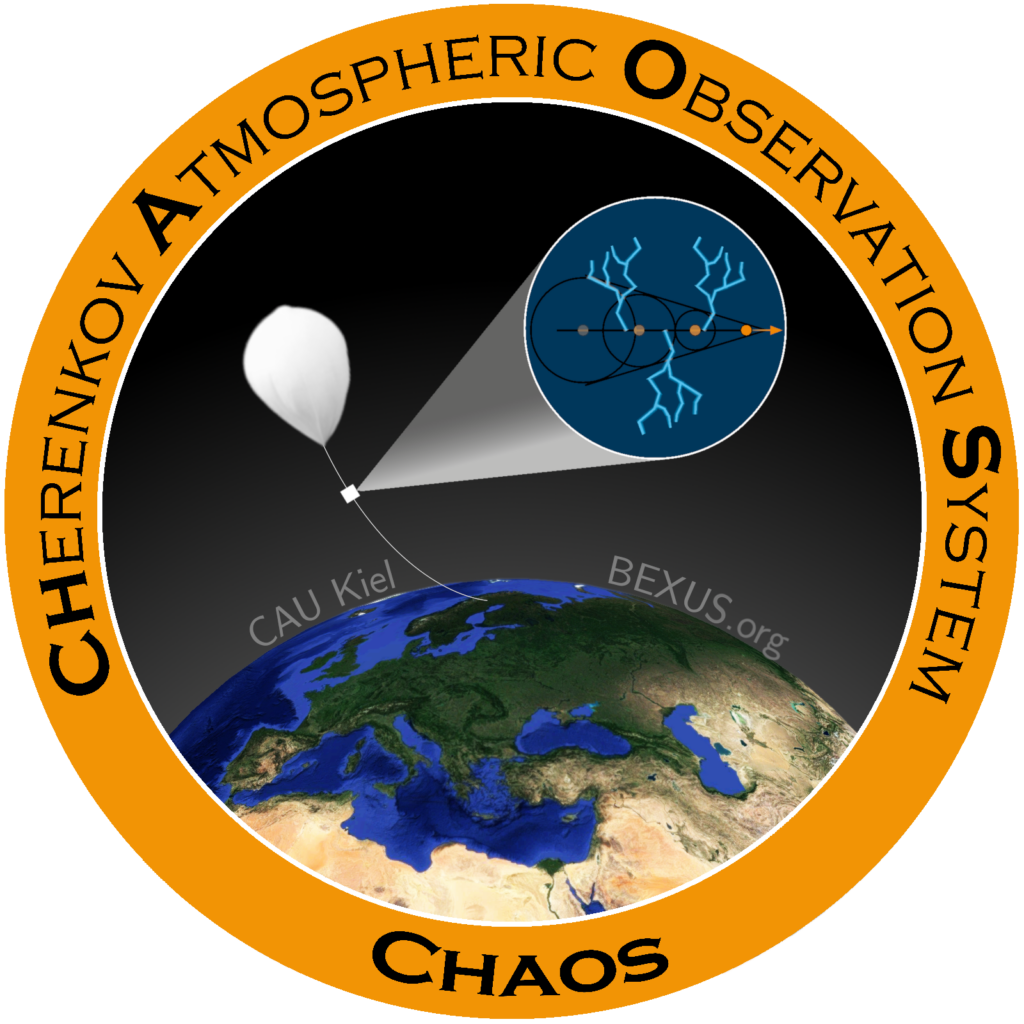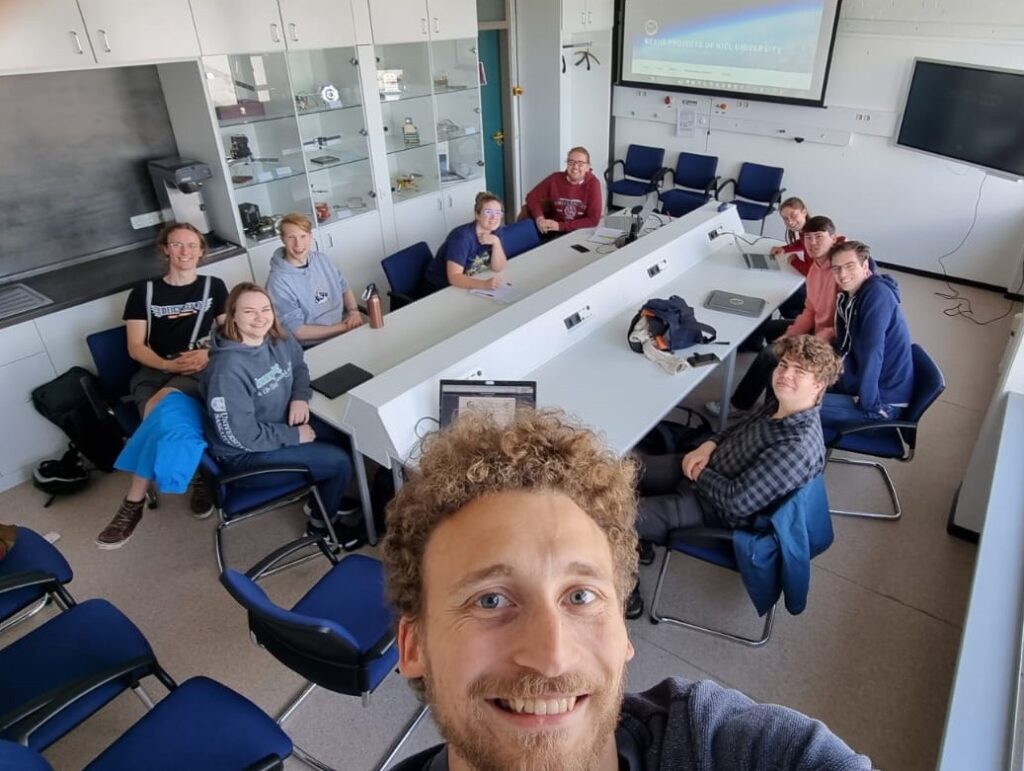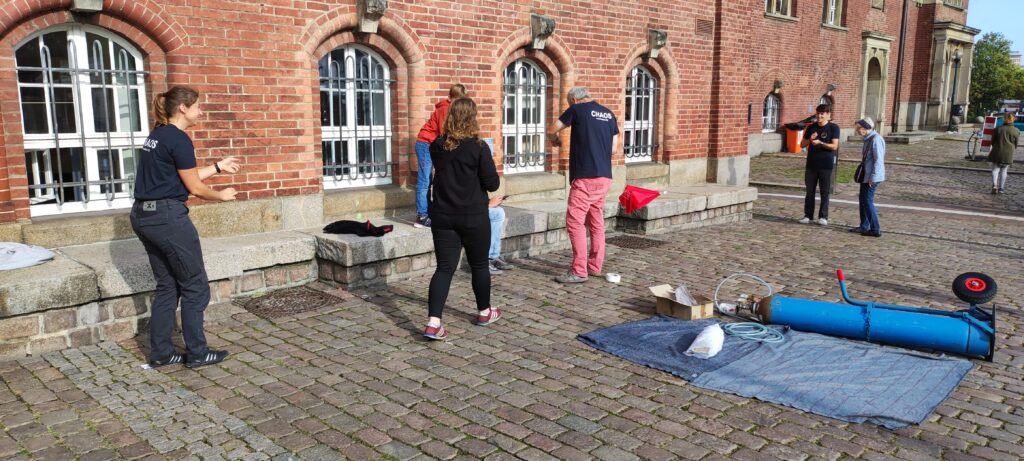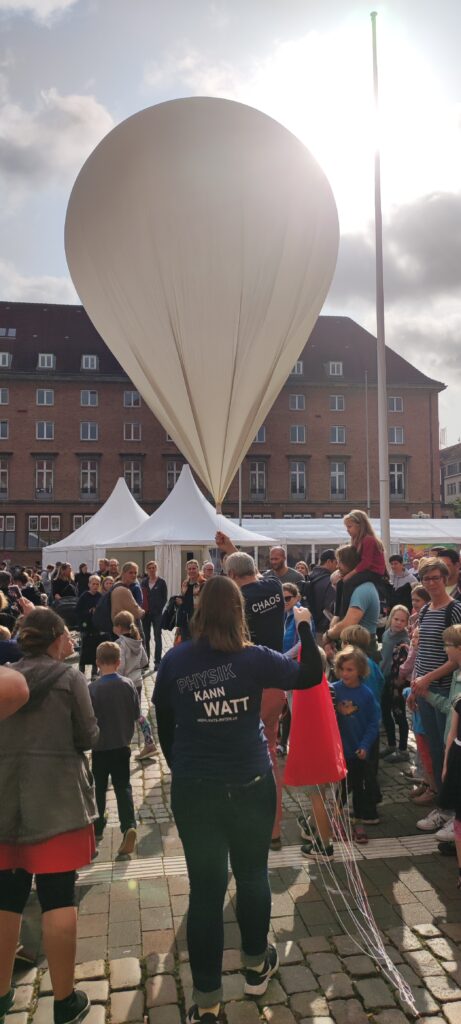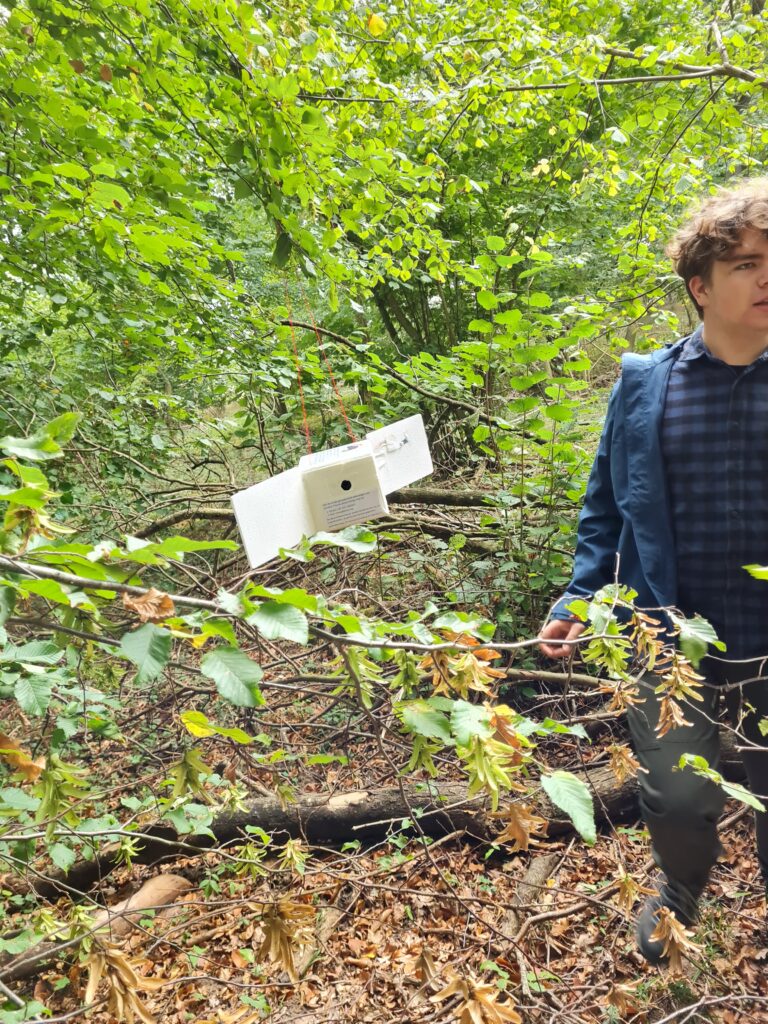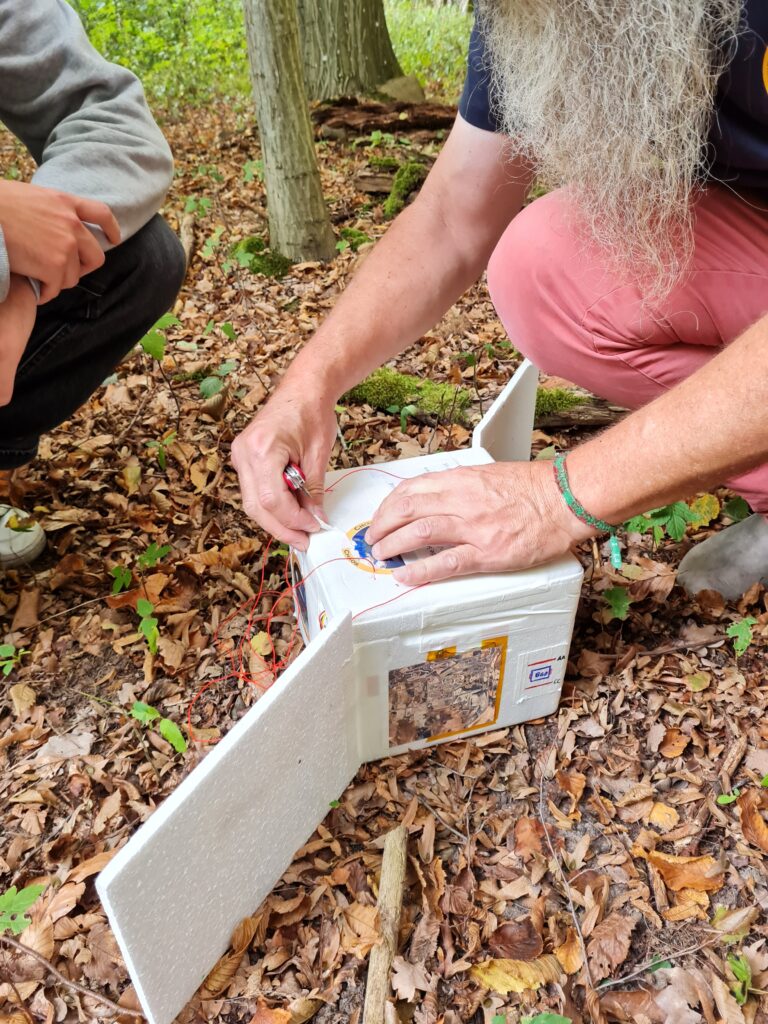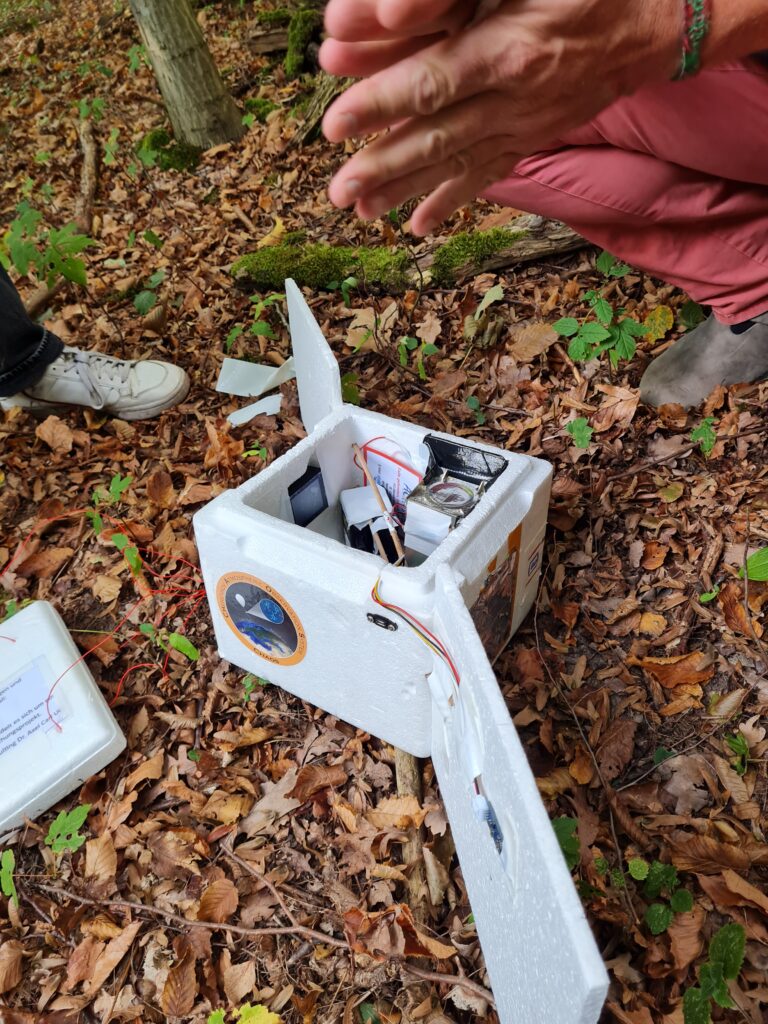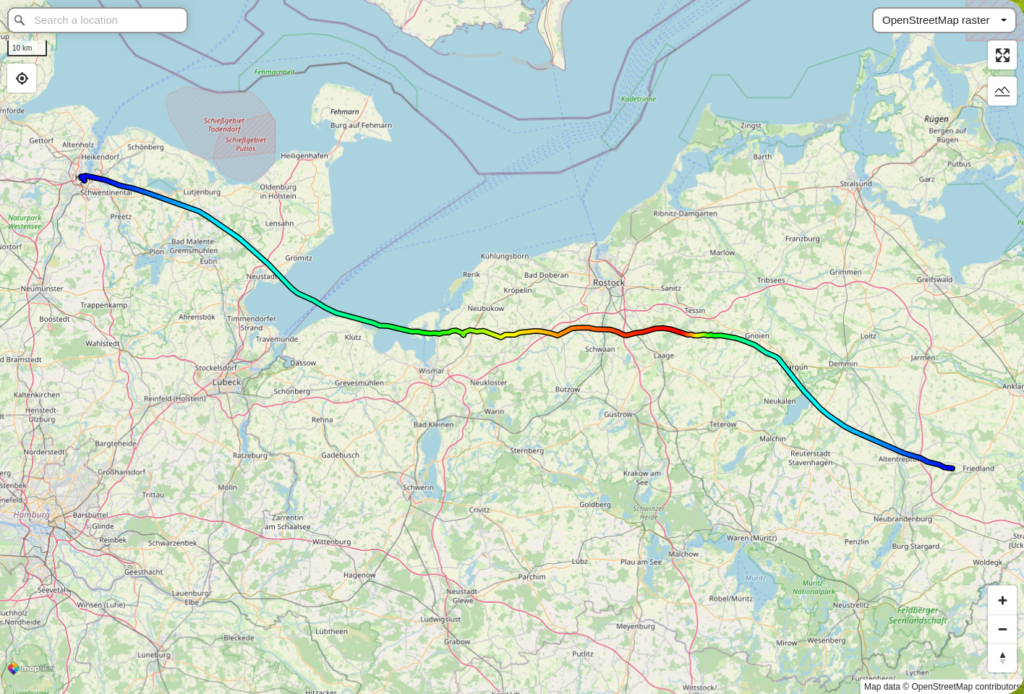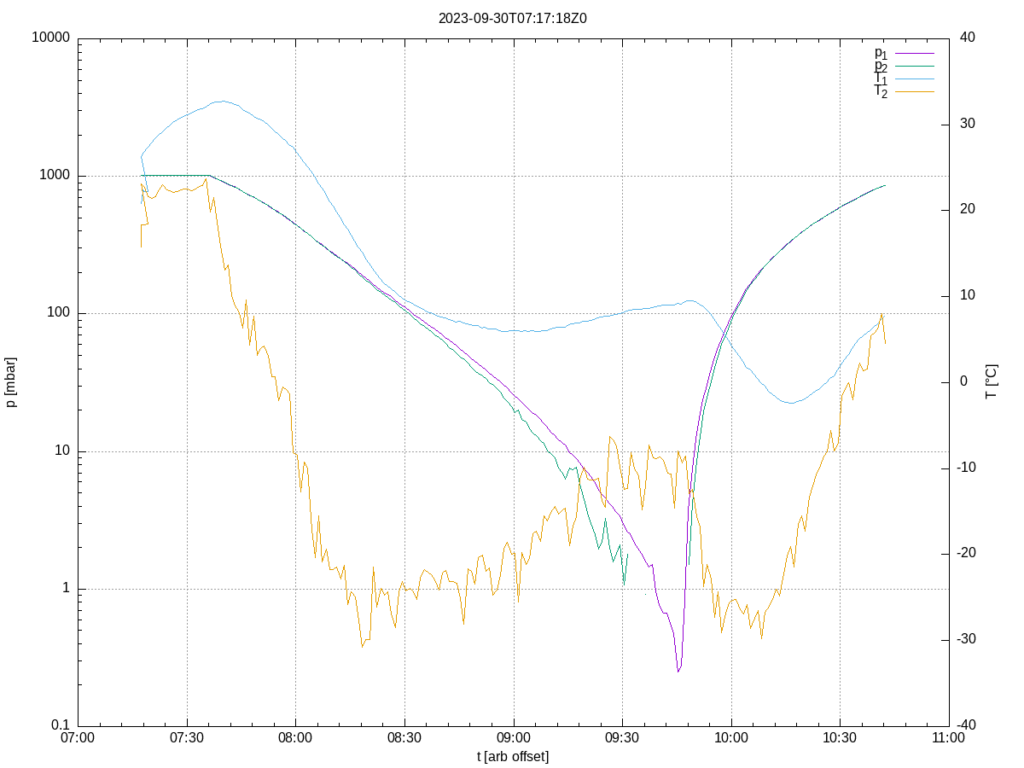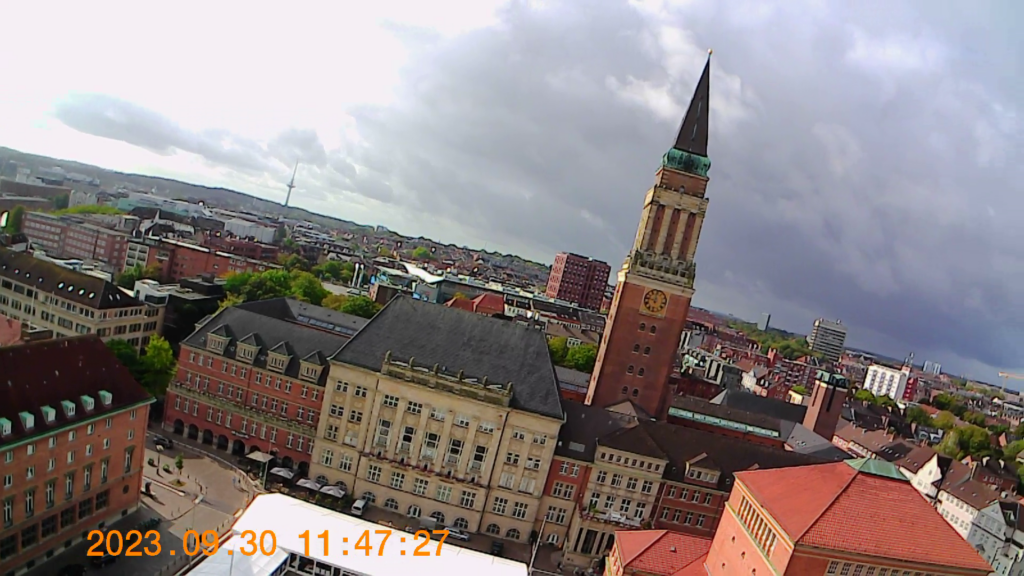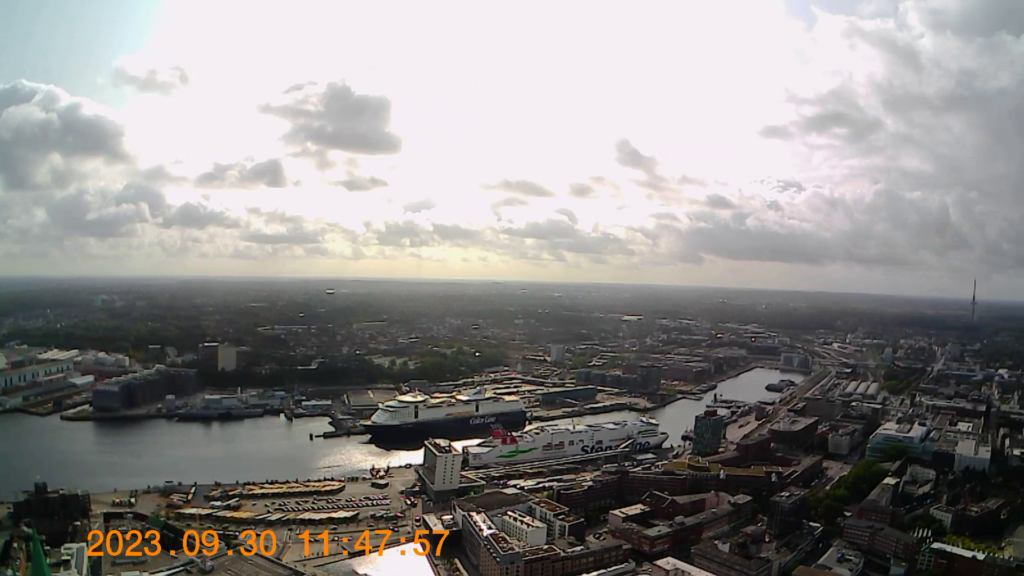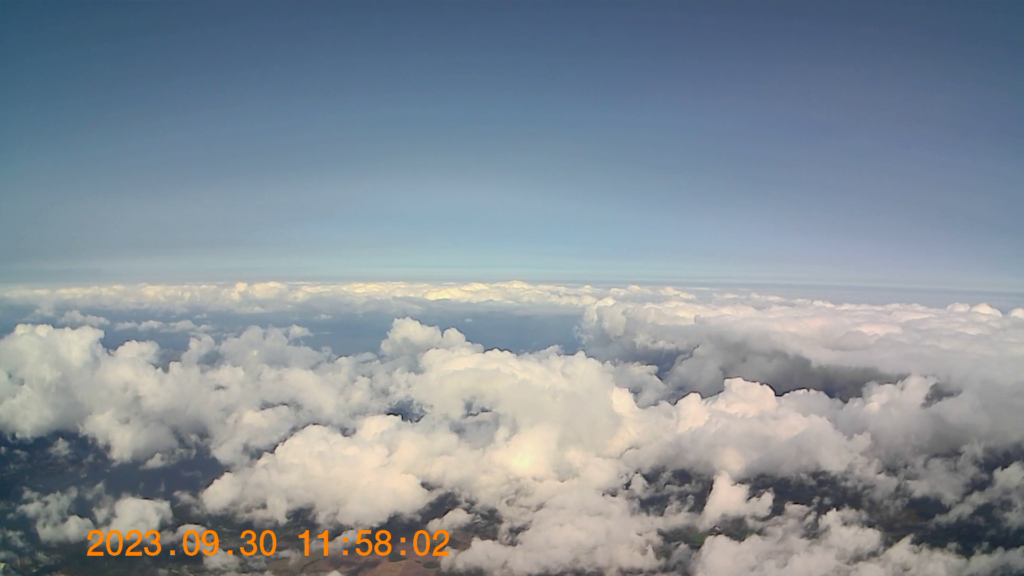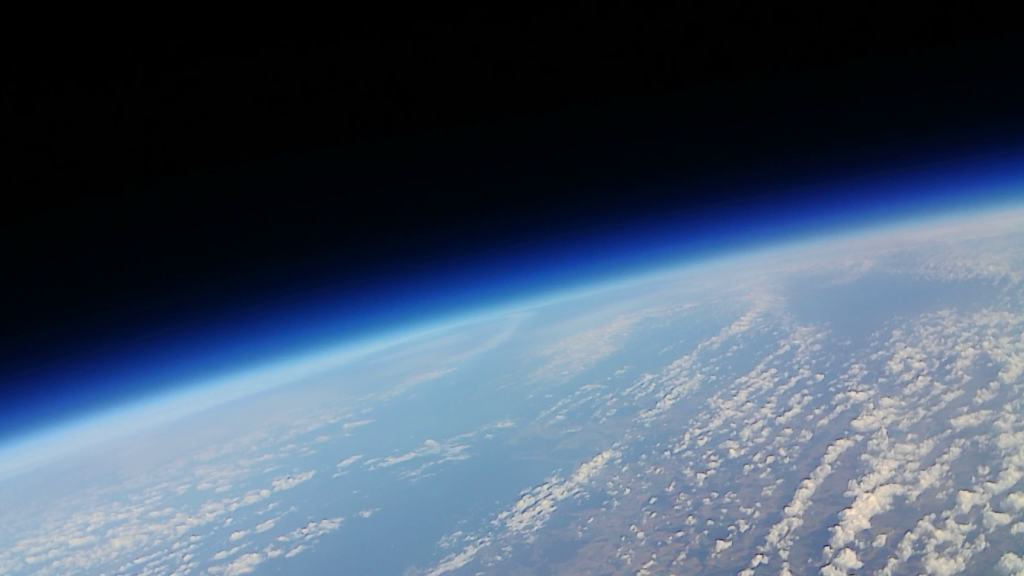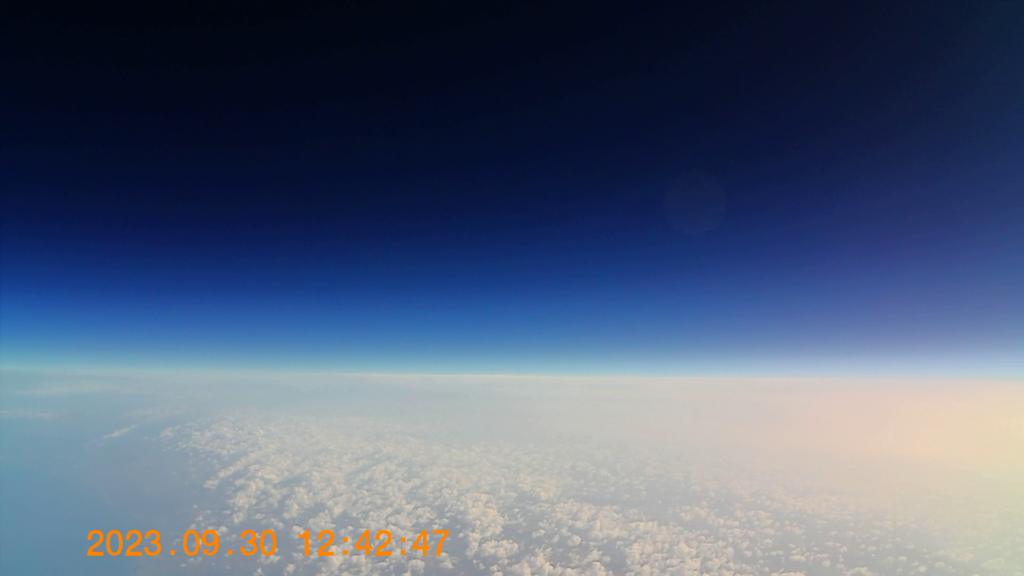The next extraterrestrial BEXUS project SETH shall include a new module called SETHAT, to measure the magnetic and gravity field vectors. Of course, this needs to be tested on a weatherballoon mission. The launch was scheduled on Tuesday, April 1st, 11 o’clock, after we watched the forecasts for weeks, while the landing was firmly predicted in the baltic sea between Gdańsk and Malmö. Now, it would land between Rendsburg and Hohenwestedt, safely right in middle of Schleswig-Holstein, with a clear blue sky.
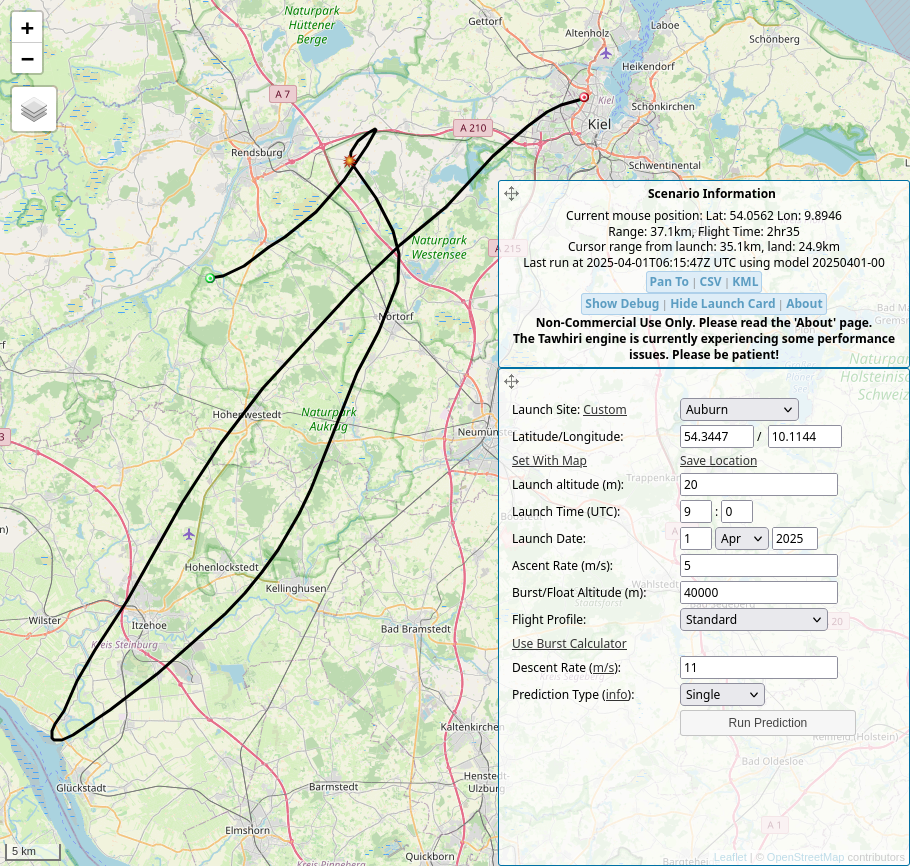
Prediction for a launch on 11:00 CEST from Kiel: Red dot: launch position, green dot Landing, balloon pops at 40km: explosion.
Launch
At 10 o’clock the press arrived to follow the launch preparations. The reporters were underwhelmed by the crowd of three students and one graybeard. But then, unexpectedly, Matti and his Nawi class came along, from the Ricarda-Huch-Schule. The crowd was there, and the class was immediately put to work. Inflating the balloon, calculating and watching the Helium pressure, giding the payload gondola. But the graybeard (me) immediately recognized the bad omen, that Matti’s arrivals induced: all three of Matti’s own Balloons landed off shore.
Matti’s students did a good job, though, the liftoff on 10:42 was prefect.
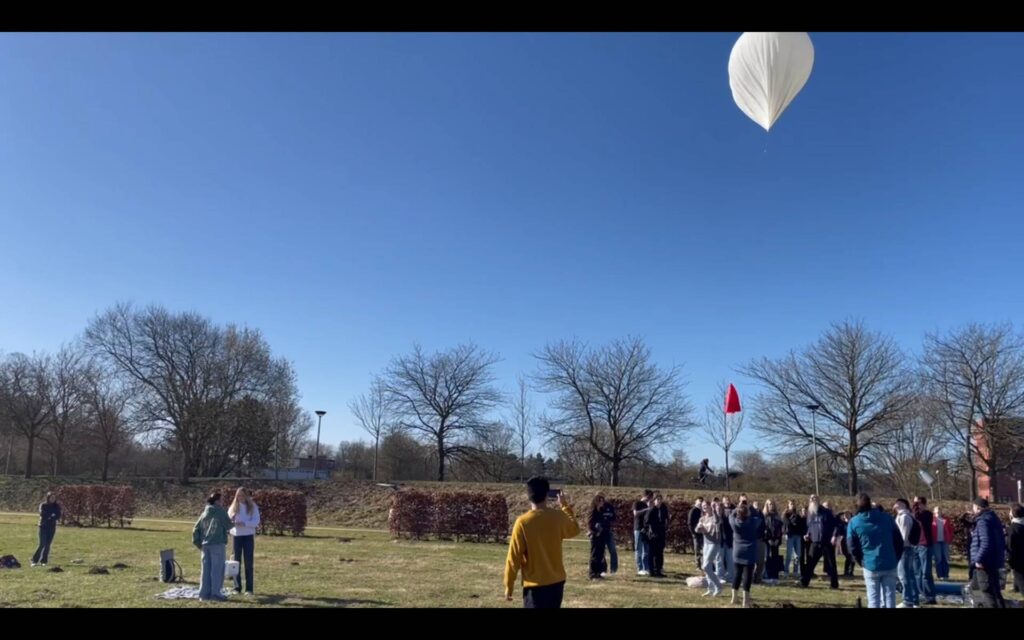
The Helium bottle went back into storage, we had a quick lunch, and soon where on the road to Schachtholm airport, close to the Breiholz ferry. We got a coffee and some icecream, waiting for the balloon to land on the runway in front of us. In any case, we could quickly get to either side of the canal.
Tracking
The satellite tracker provides positions of our balloon every five minutes. It went to Wischhafen, a little further south than expected, but quickly came back north and turned west heading straight to the airport where we were sitting, almost exactly as expected. Even after the balloon popped, the satellite tracker was still providing positions, from heights up to 40km. Usually, there are no GPS solutions above a height of 20km from those surface trackers.
And those positions were rapidly going south, much faster than the forcasts predicted. Soon, we realized that it would land south of the river. Overhead of the Elbe, our box was still four kilometers high in the sky, … and then it turned west. It came down right in the water, close to Neufeld.
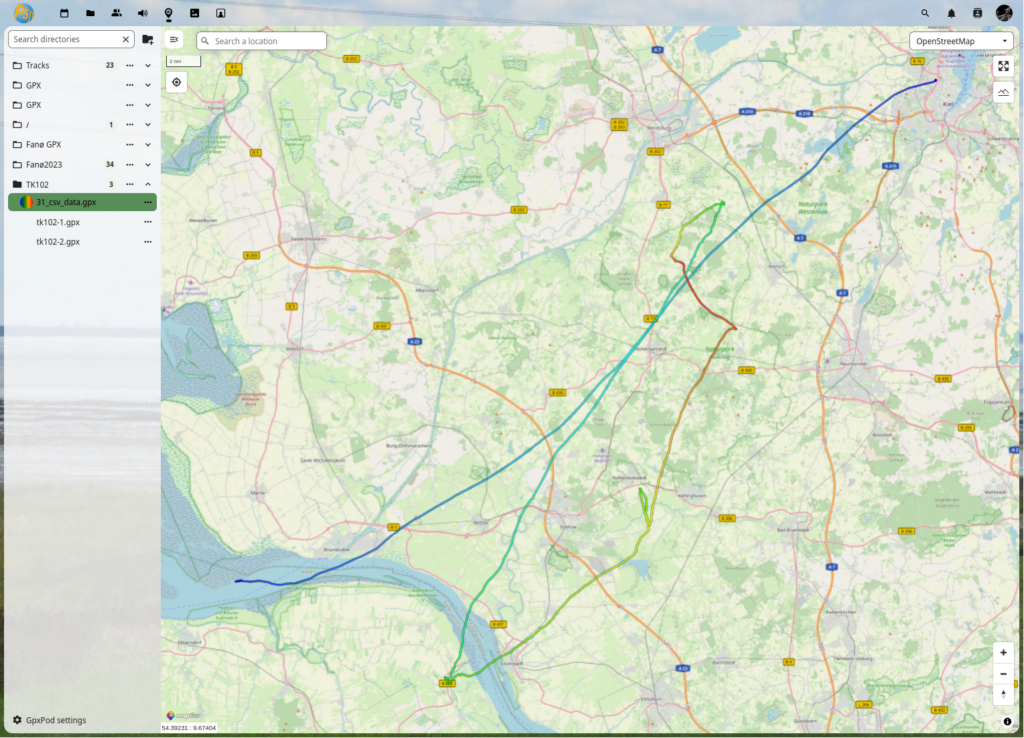
Recovery
We were on the way to the ferry in Glückstadt, when we turned around towards Brunsbüttel and Neufeld. There was only one boat in the harbour, belonging to Hafenmeister Hein Claußen. We got on bord, heading towards the last coordinates submitted by the satellite tracker.
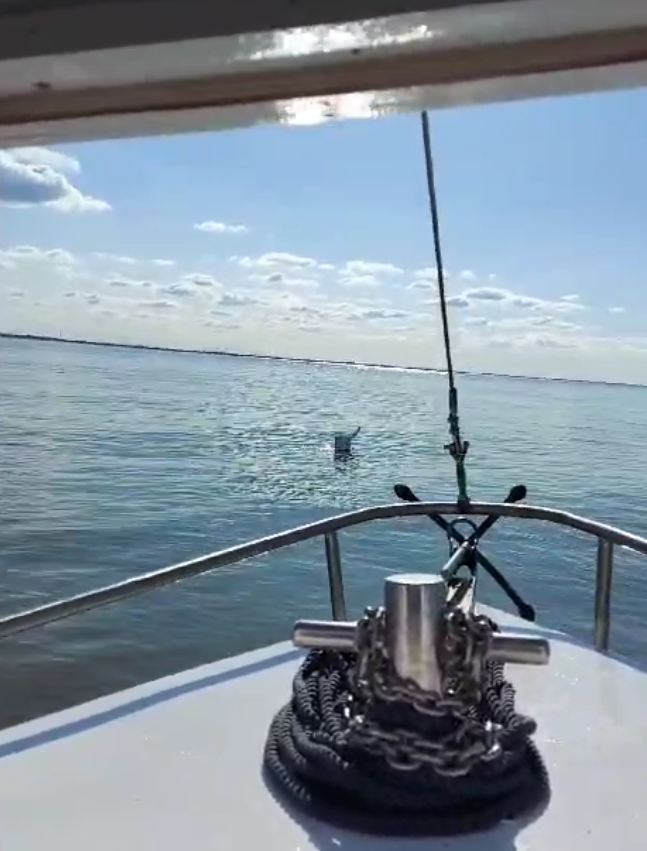
In the beautifull weather it was no problem at all to spot the payload of our mission.
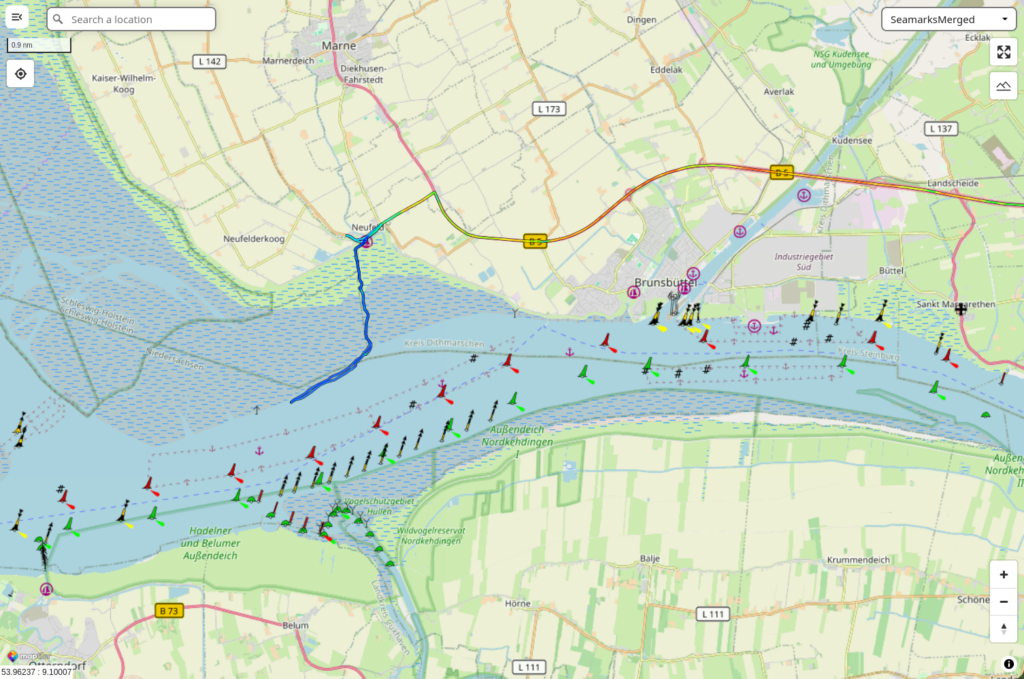
The parachute was full of sand, serving as an anchor. The box was very slowly drifting towards Hamburg with the tide. The anchor kept the box upside down, the custom payload electronics on the bottom of the box was held high above the water line. It turned out that is it still fully functional.
The avionics (SIM trackers, datalogger, video camera) are all corroded beyond repair. Salty water and with the batteries still connected quickly destroyed those units. Only the watertight satellite tracker survived unscratched.
All three storage cards in the gondola were recovered and are readable. We have video from launch and until the battery run out at 35 km height. The card from the datalogger provides pressure, temperatures, further environmental data, and precise GPS coordinates. The later are the source of the flight track shown above. The SD-card in the Raspberry Pi bord computer faithfully recored the output of the SETH Attitude sensor, the 3Diodes cosmic ray detector and furher environmental data.
The mission is a full success.
Video snapshots
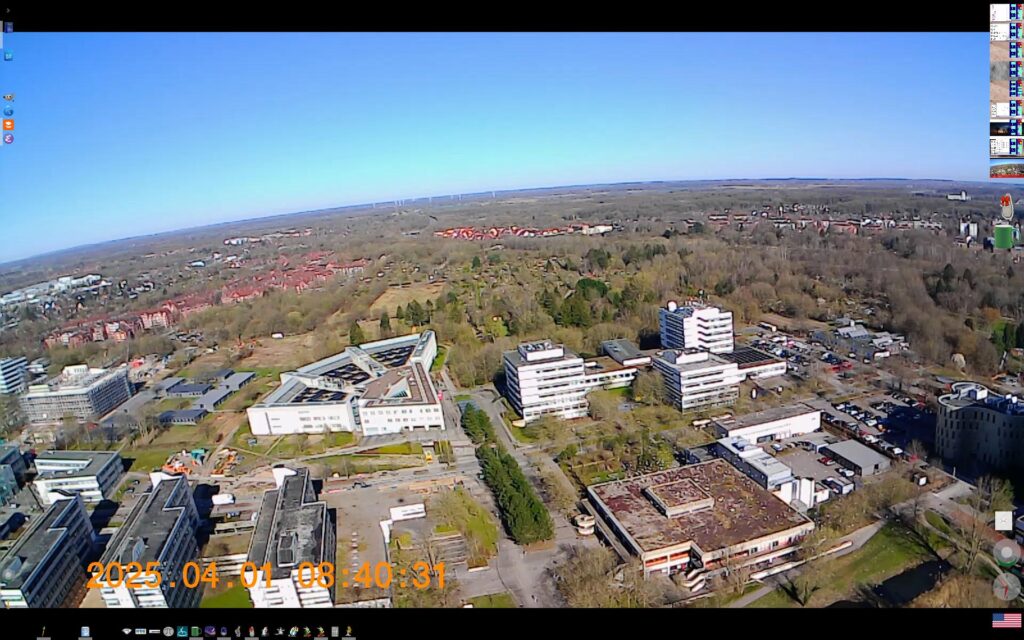
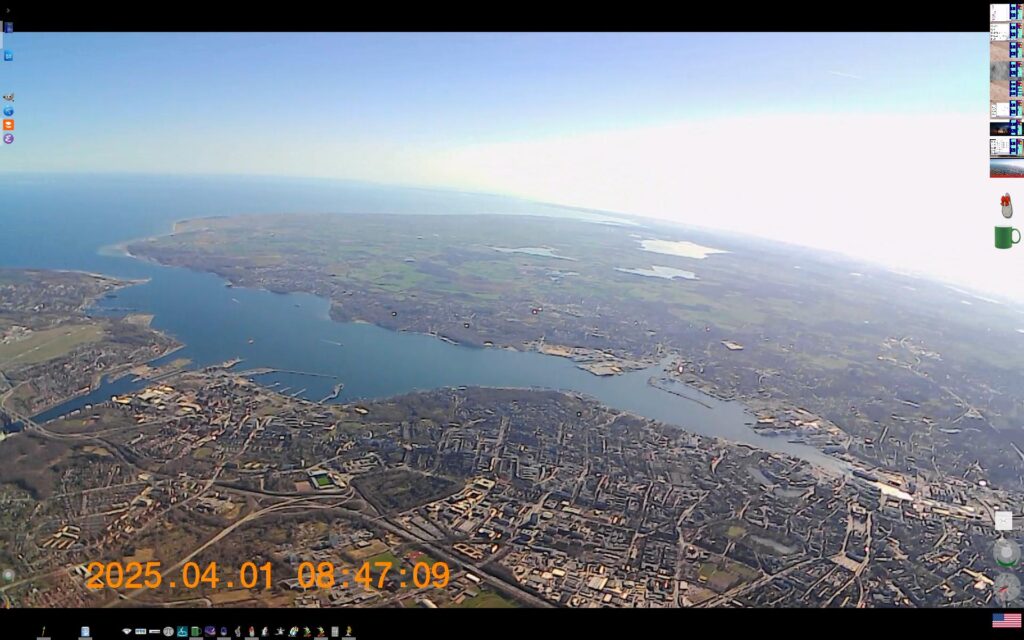
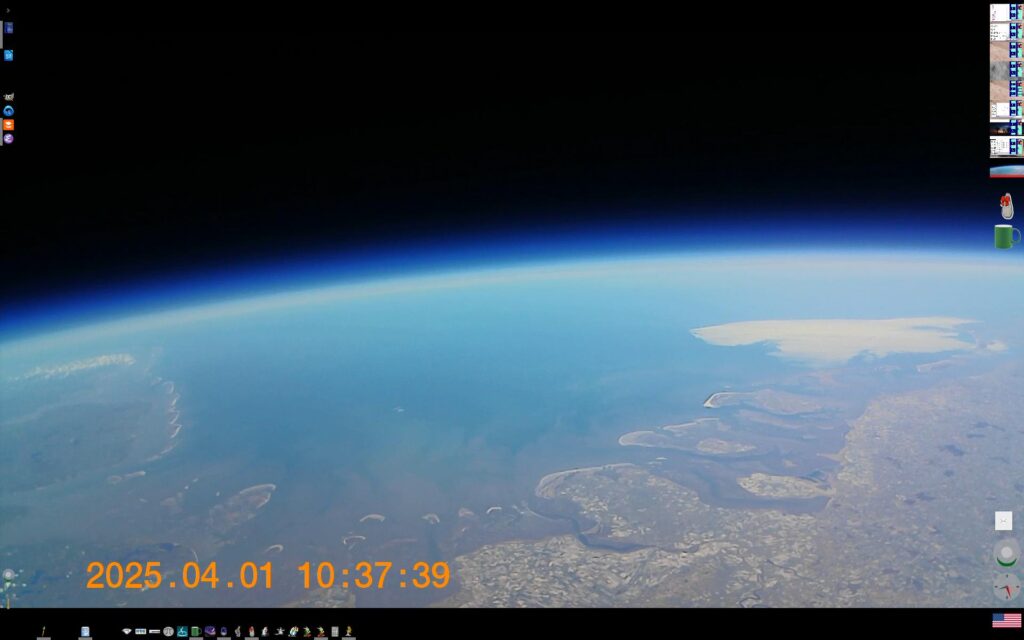
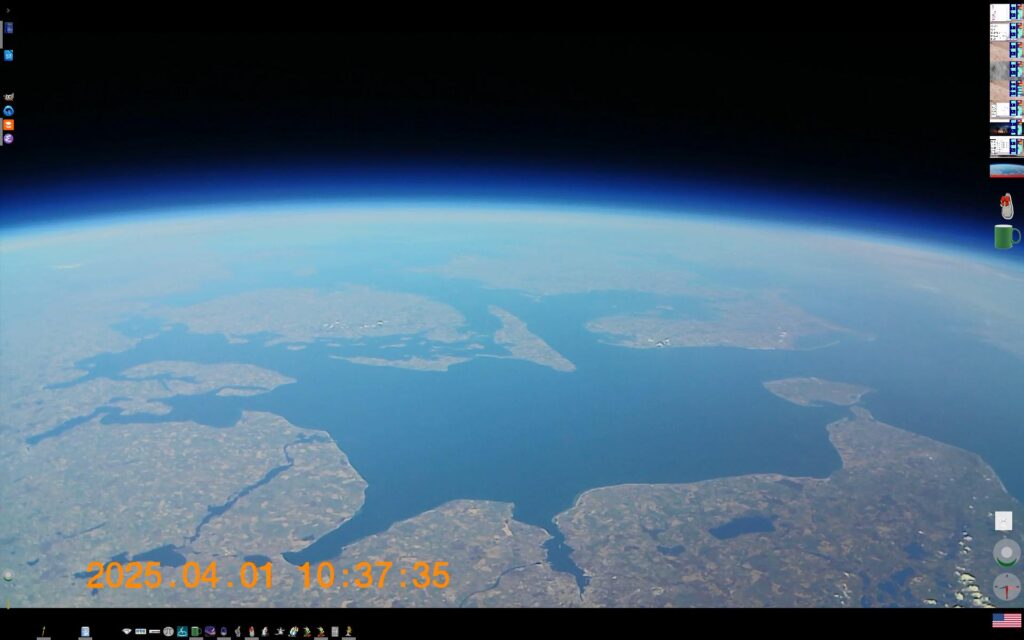
Altitude and Weather logged by the Datalogger
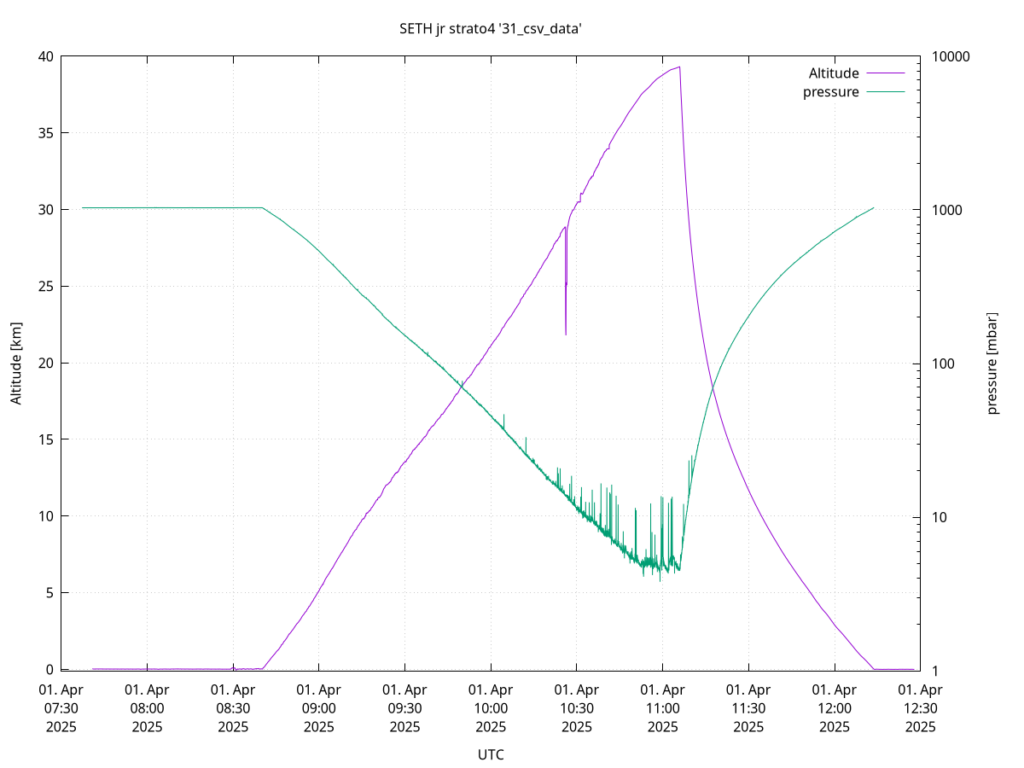
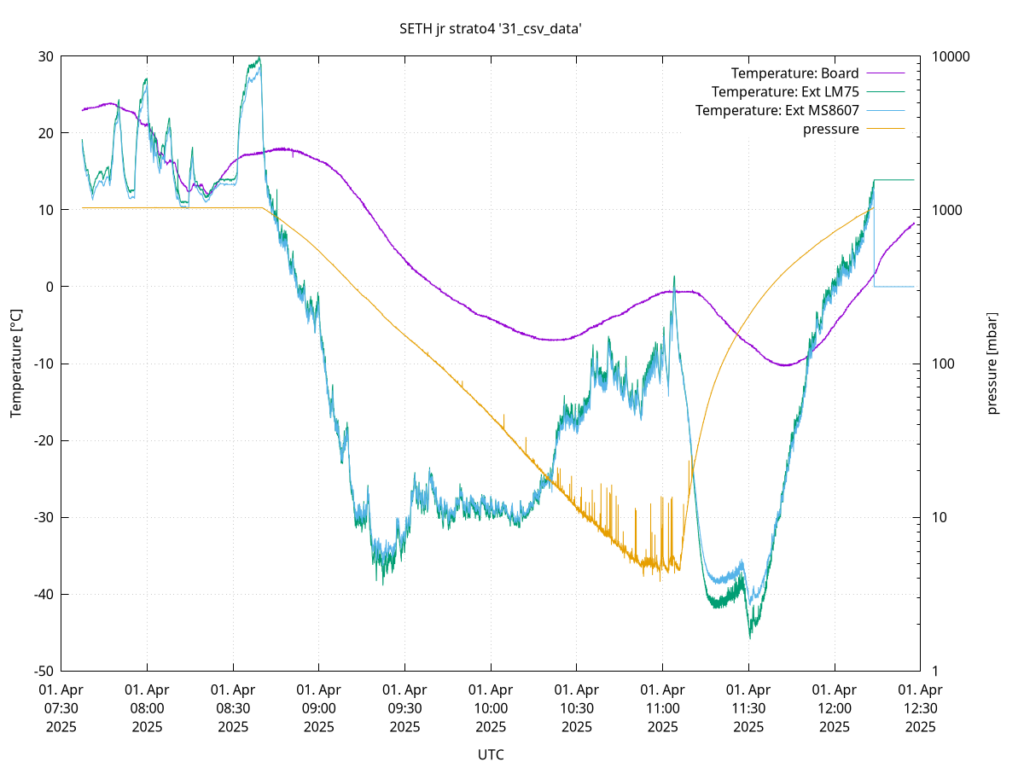
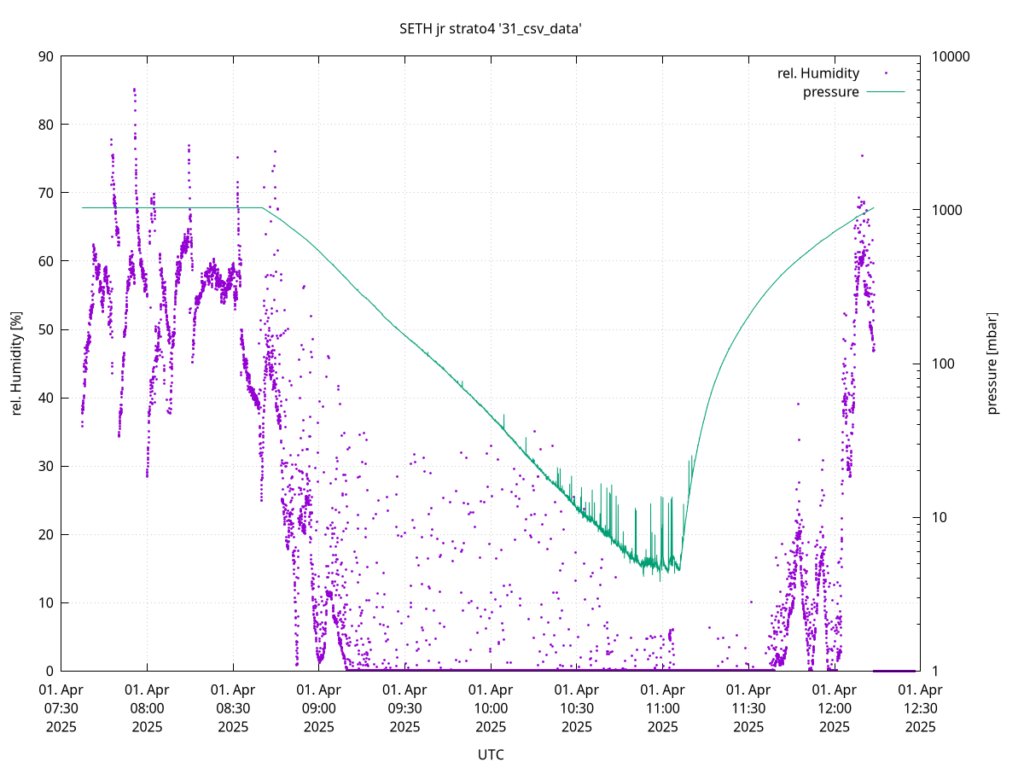
Quicklook results straight from the Raspberry Pi
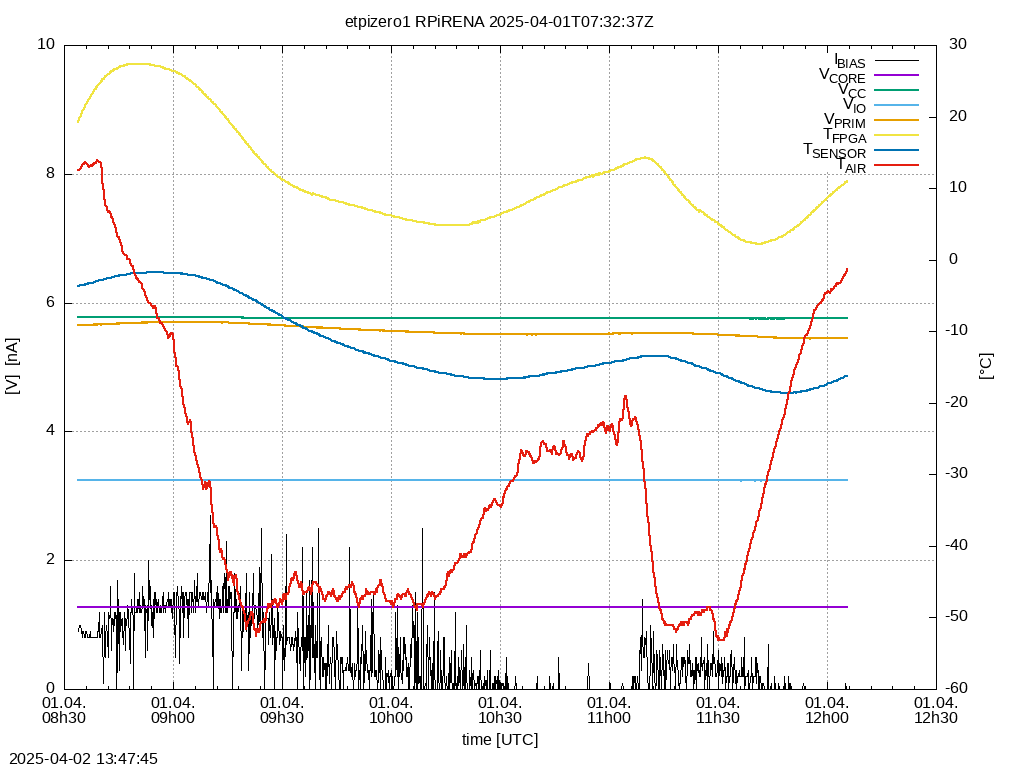
Outside temperature got as low as -50°C. The electronics stayed above 0°C. The sensor temperature is shown here with a wrong calibration. The battery voltage was good until the end. When the pressure reached 800mbar on descent, the unit turned itself off, to protect the electronics against fatal transients on impact. The storage cards are particularly sensitive to transient power disconnections .
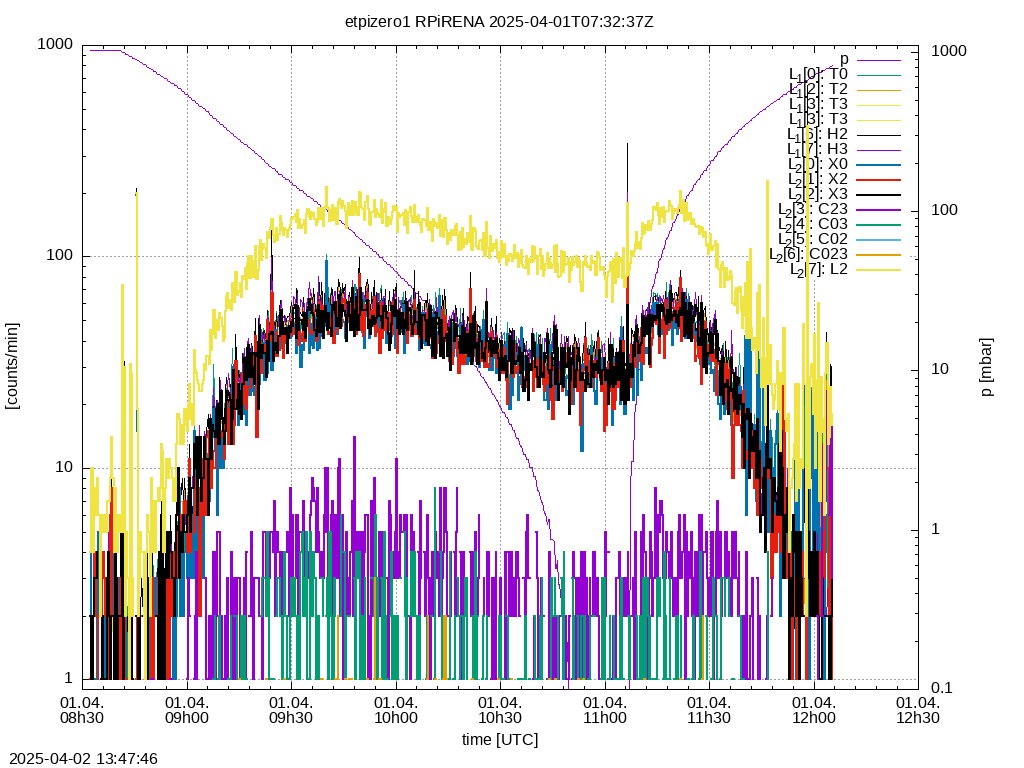
The comic ray count rates are highest at around 50 to 80mbar. This is called the Regener-Pfotzer maximum. (This pressure sensor is not rated for pressures below 10 mbar.) The colors denote various trigger conditions. The yellow line is the overall trigger rate.
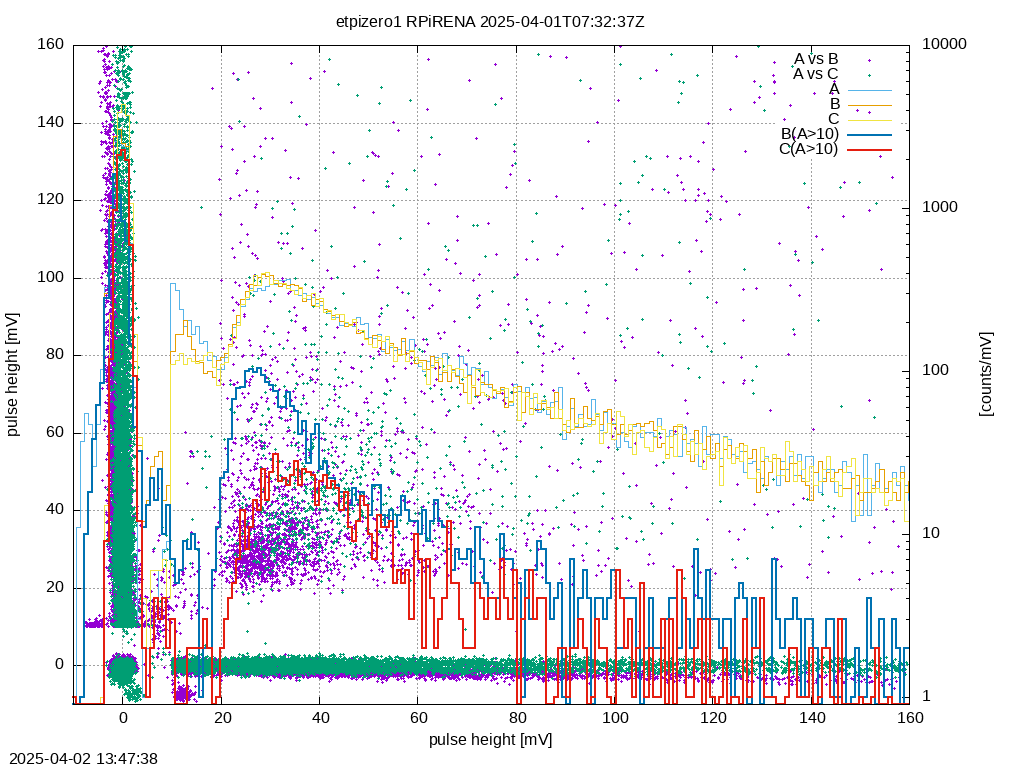
The pulse height spectra for the whole mission. Each detector diode (A, B, and C) individually count about the same number of hits, with a broad spectrum due to variable path lengths in the sensitive volume. Coincidences for vertically aligned diodes A and B show a narrow sprectrum (blue line, purple dots), due to the contrained path lengths. Coincidences for diodes A and C (red line, green dots) detect particles from a zenith angle around 45°. The path lengths are longer, the spectrum is shifted to larger energy deposits. The projected area is smaller and the flux from that angle may be different. The dependence of the flux on the zenith angle depends on the height, which is not resolved in this picture.
